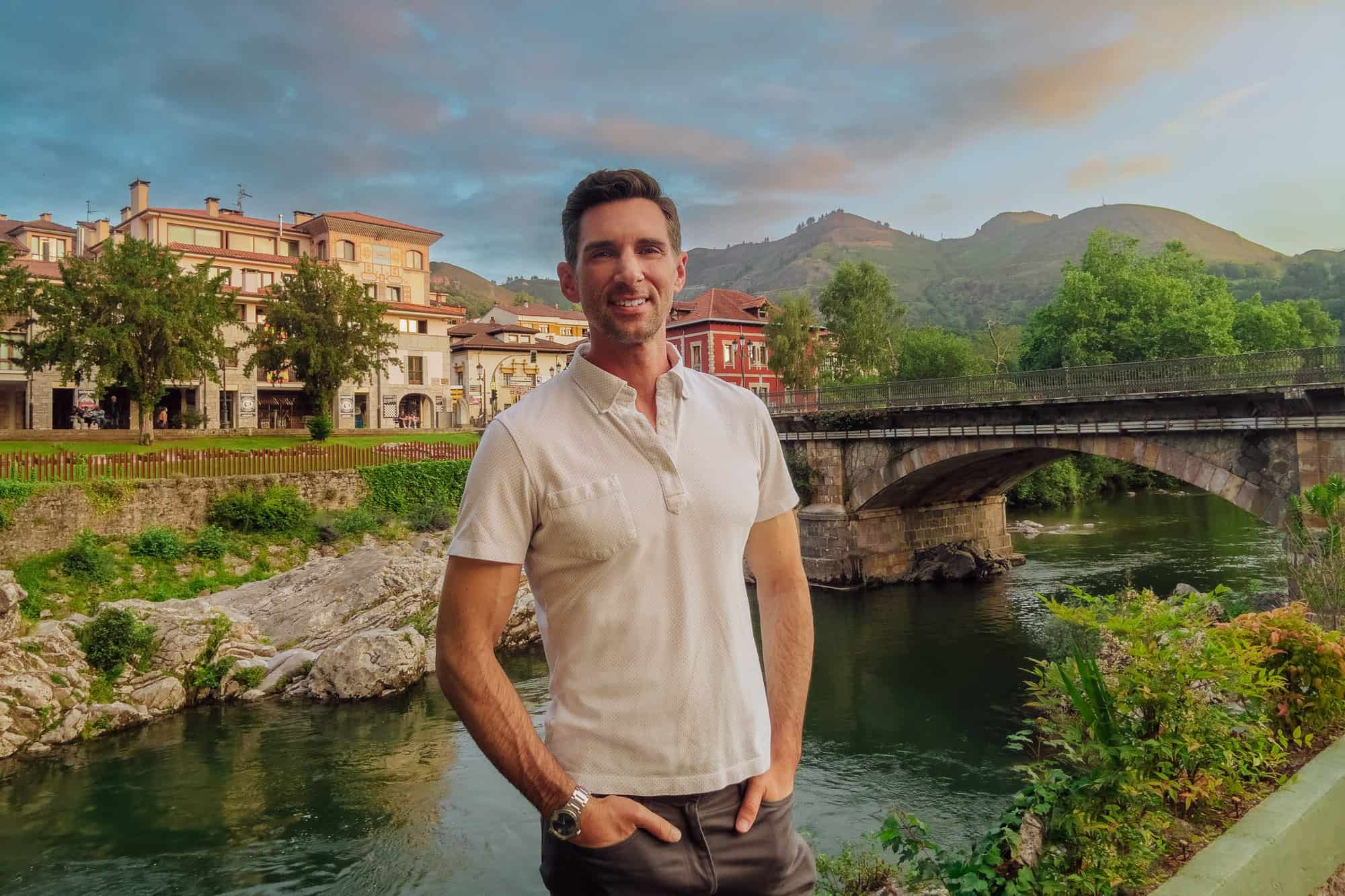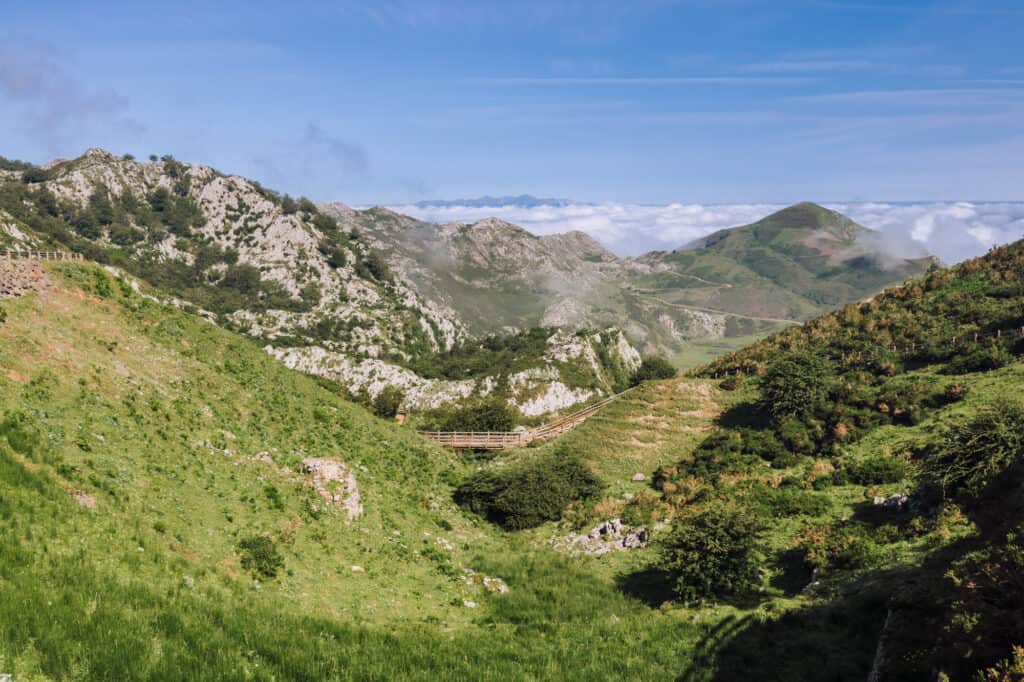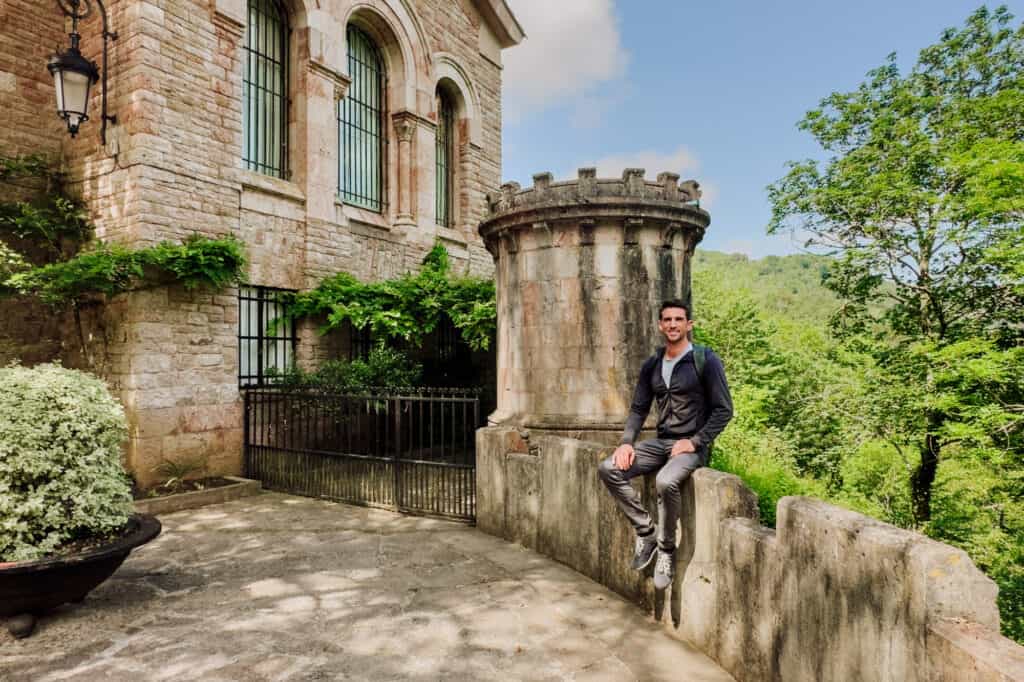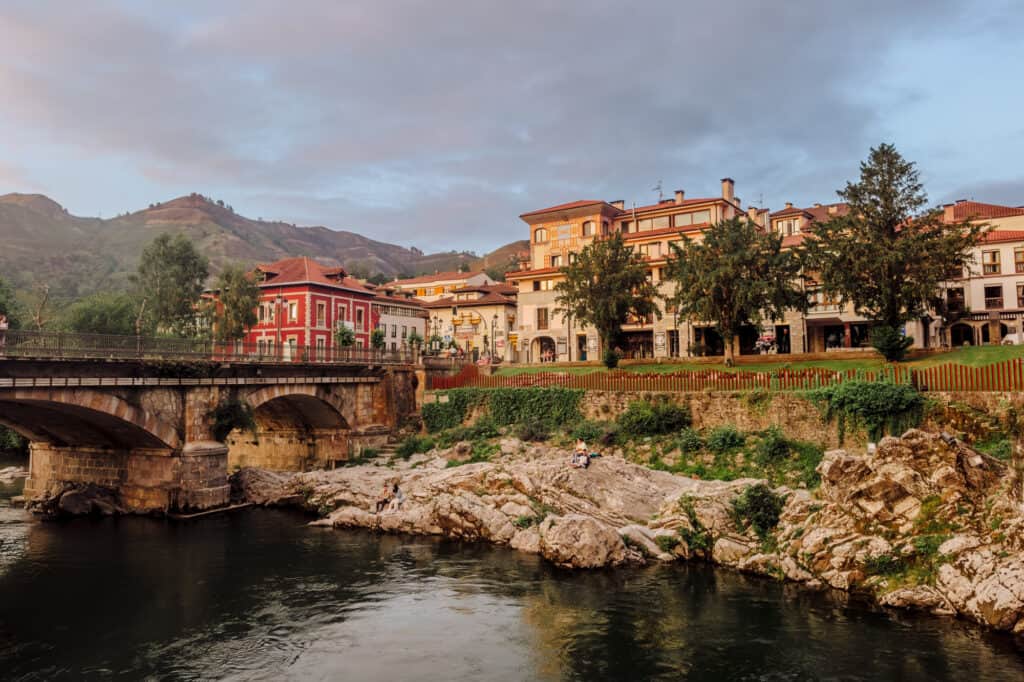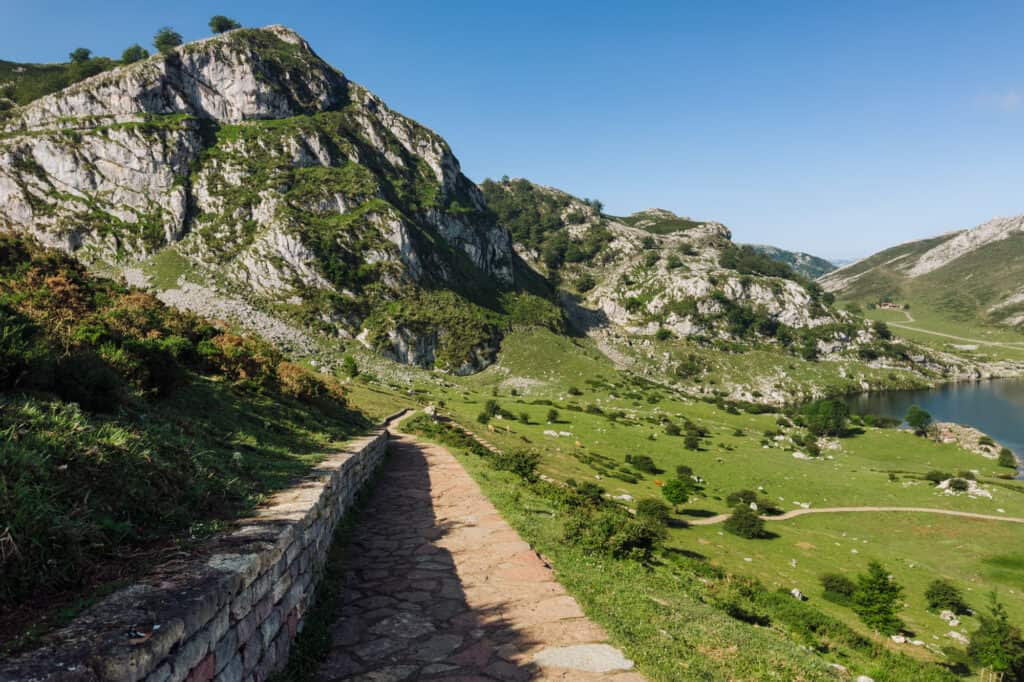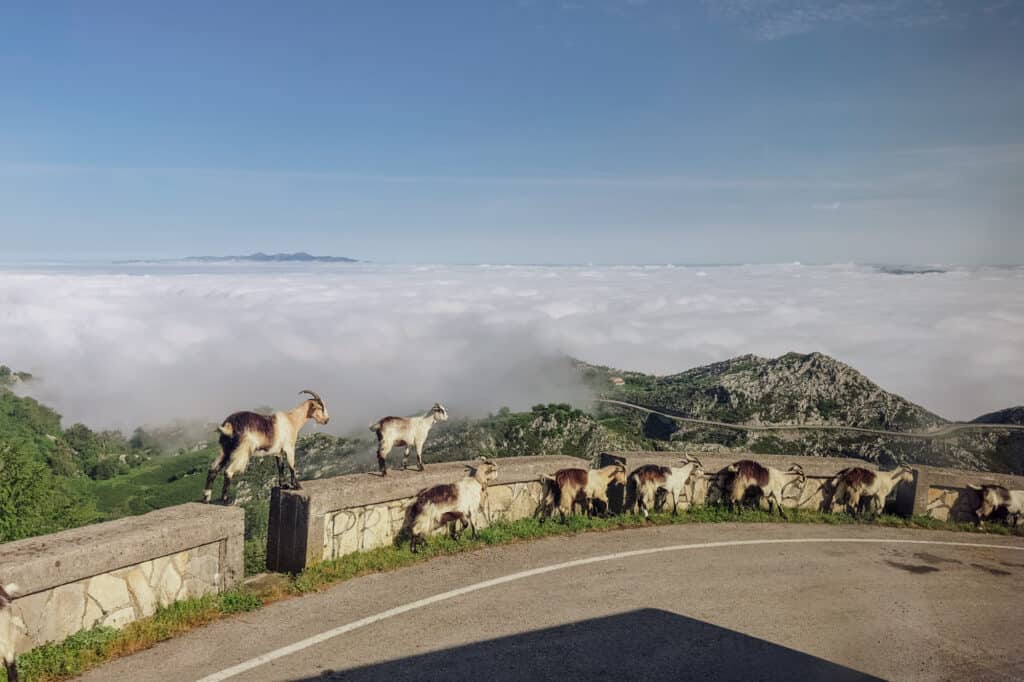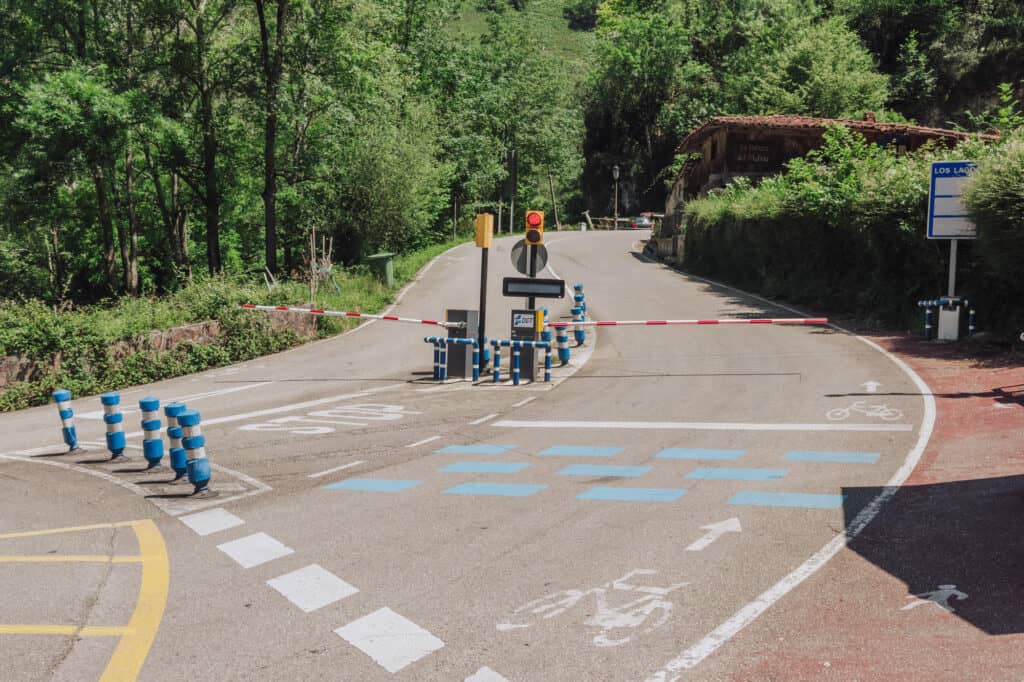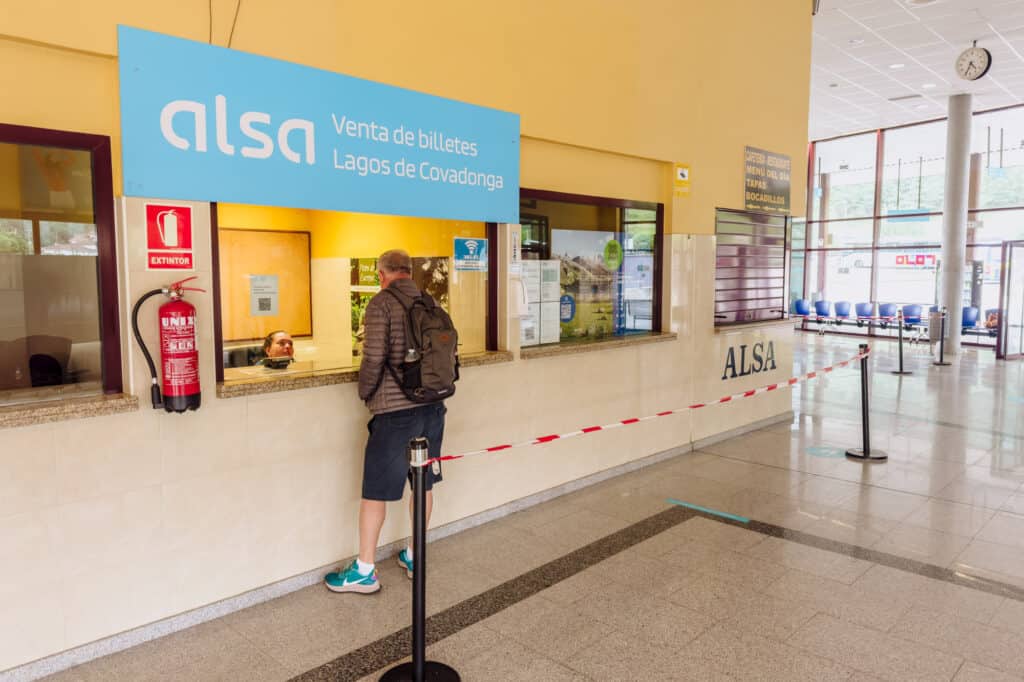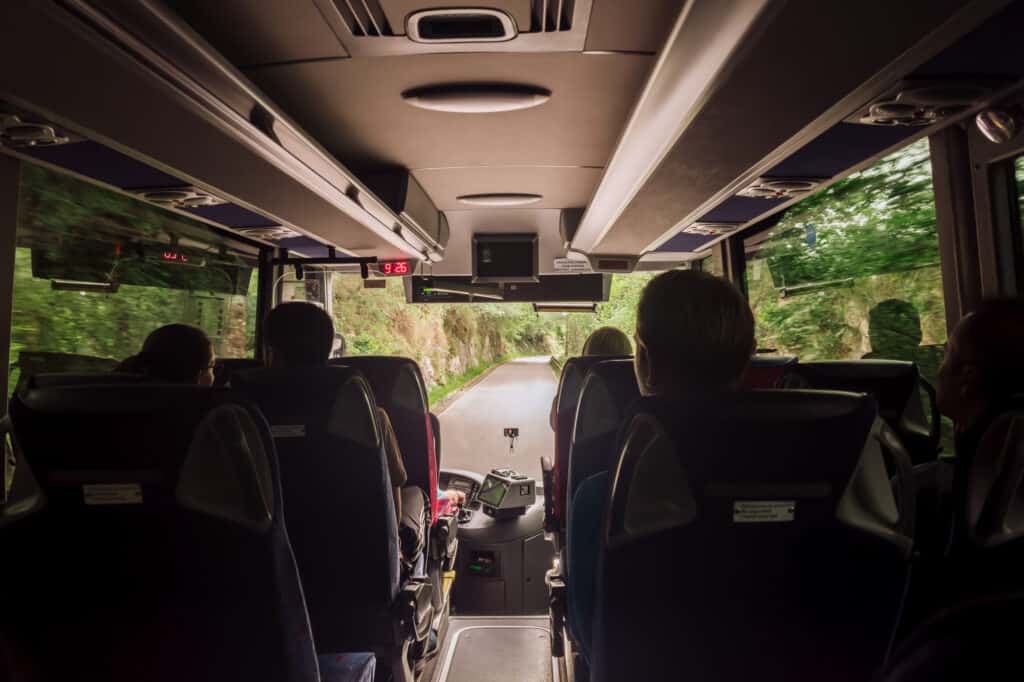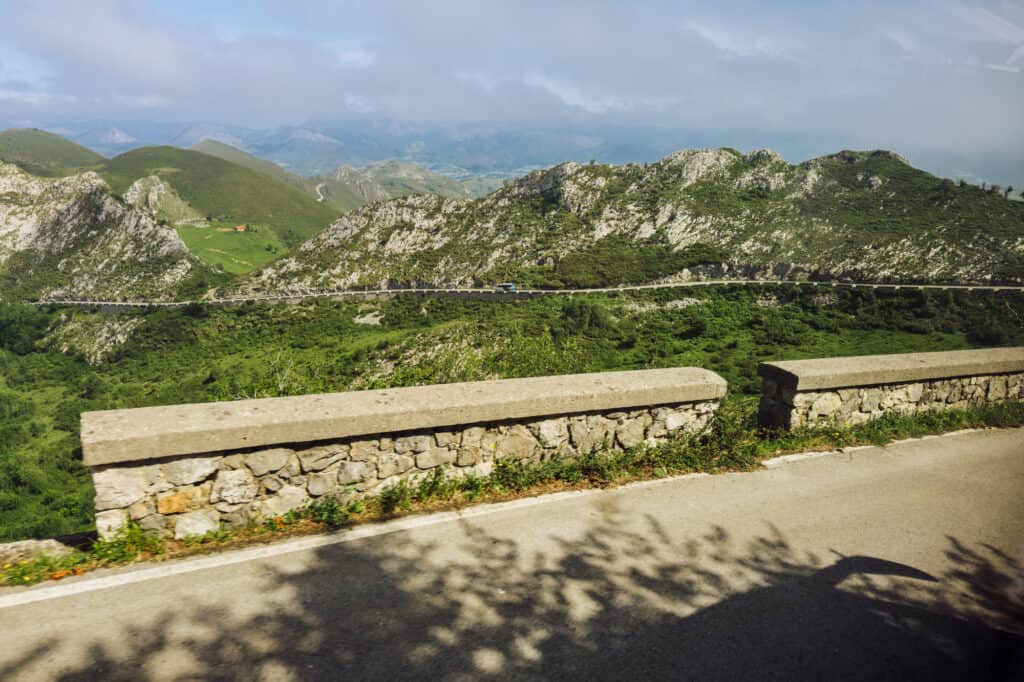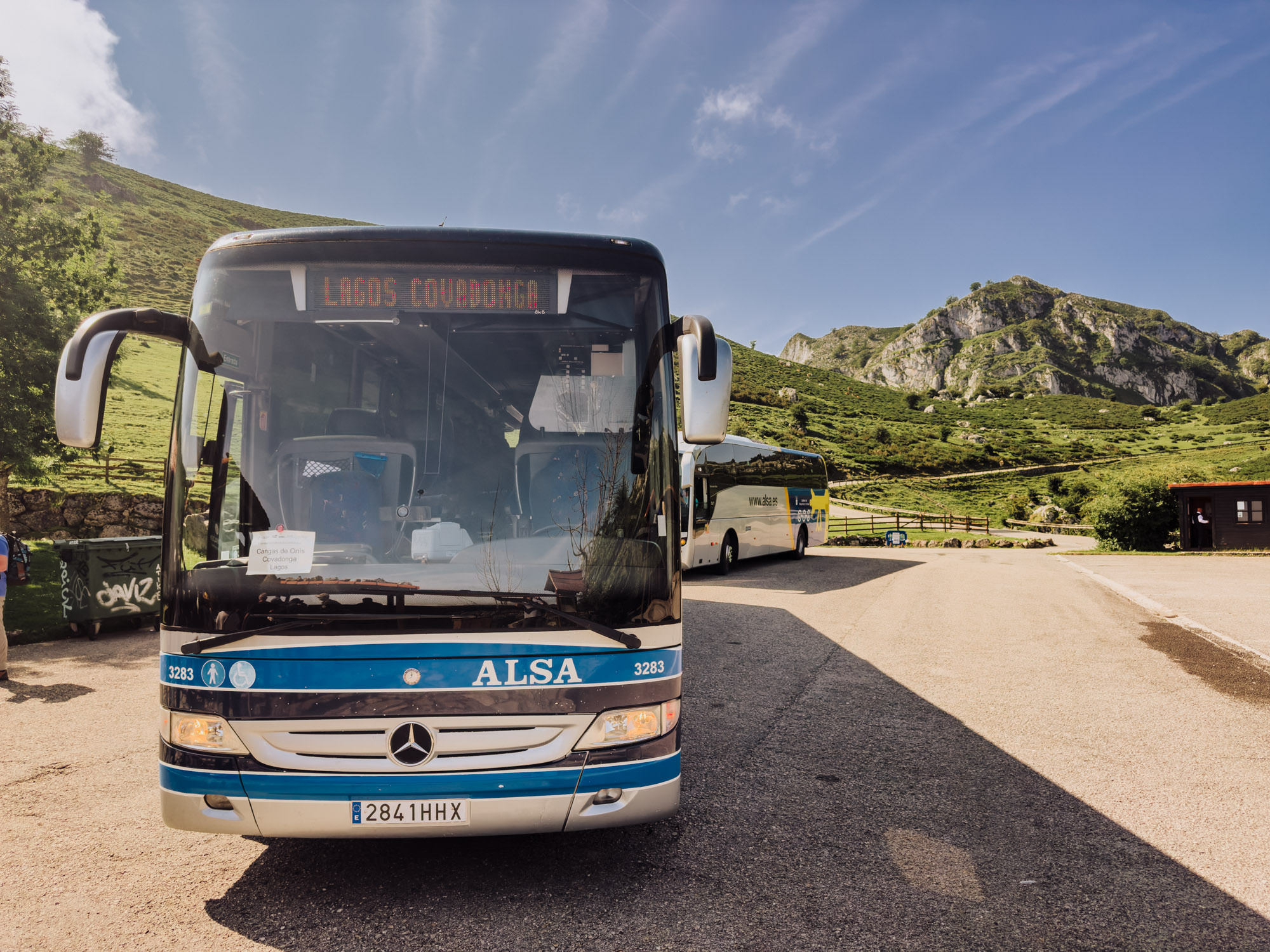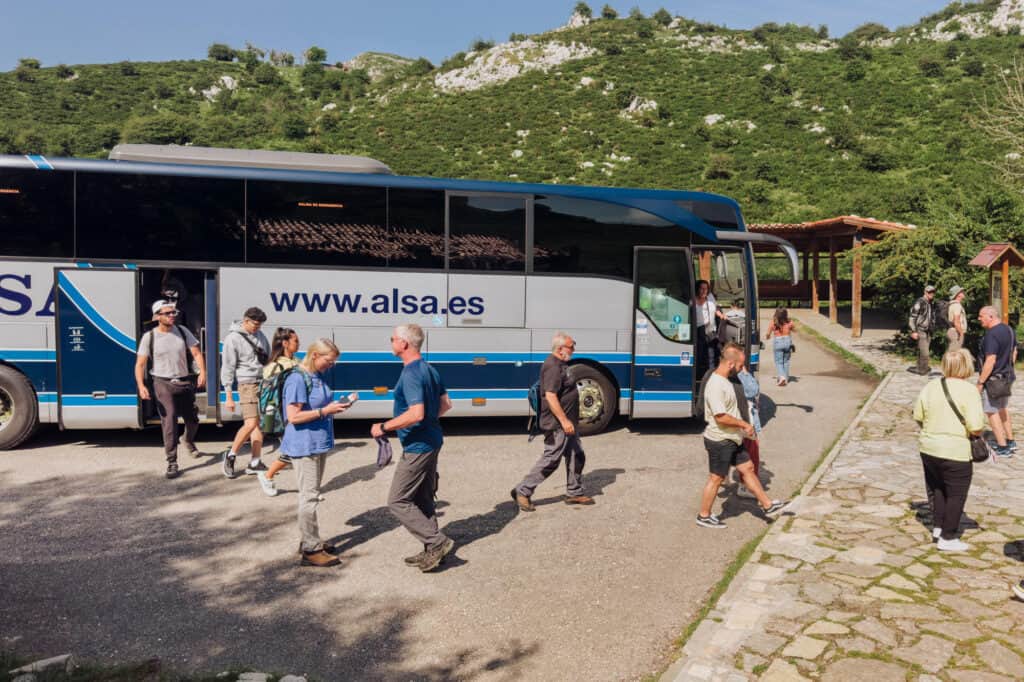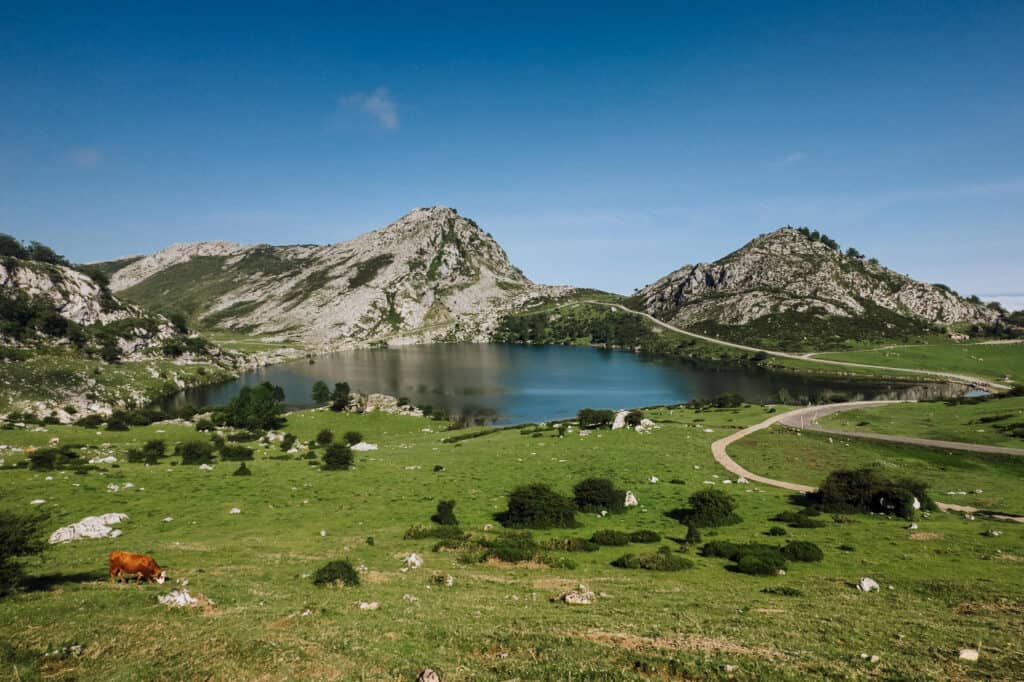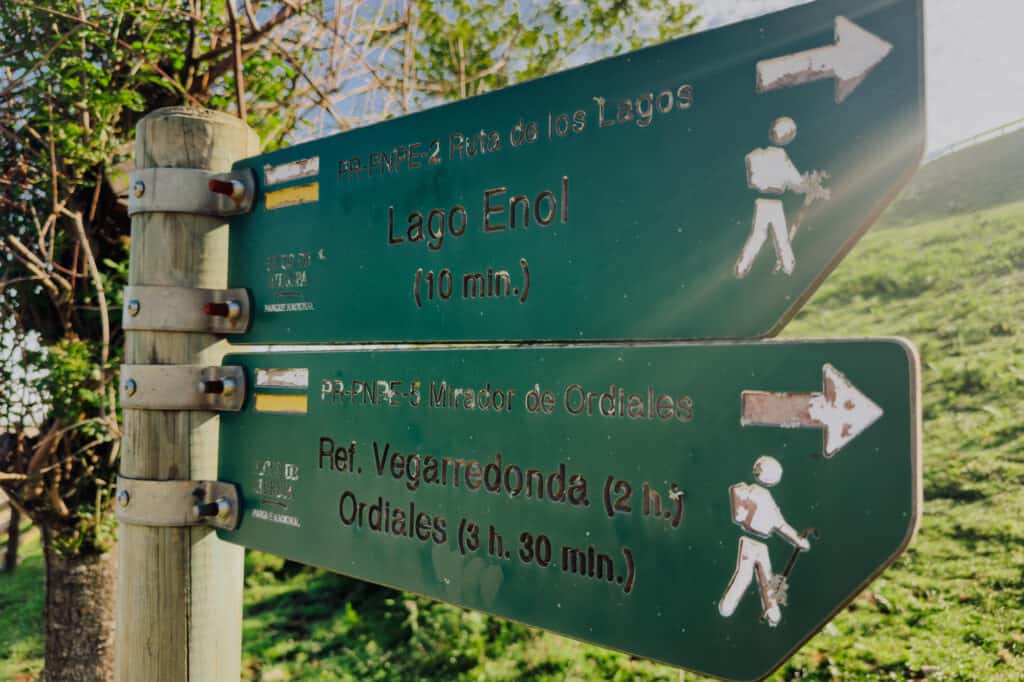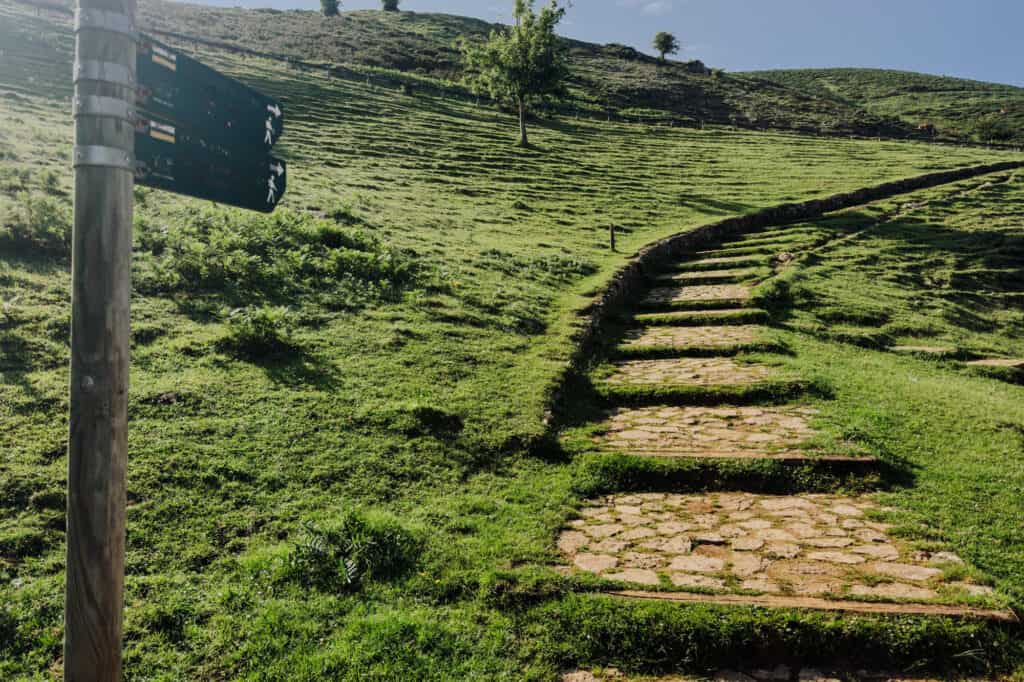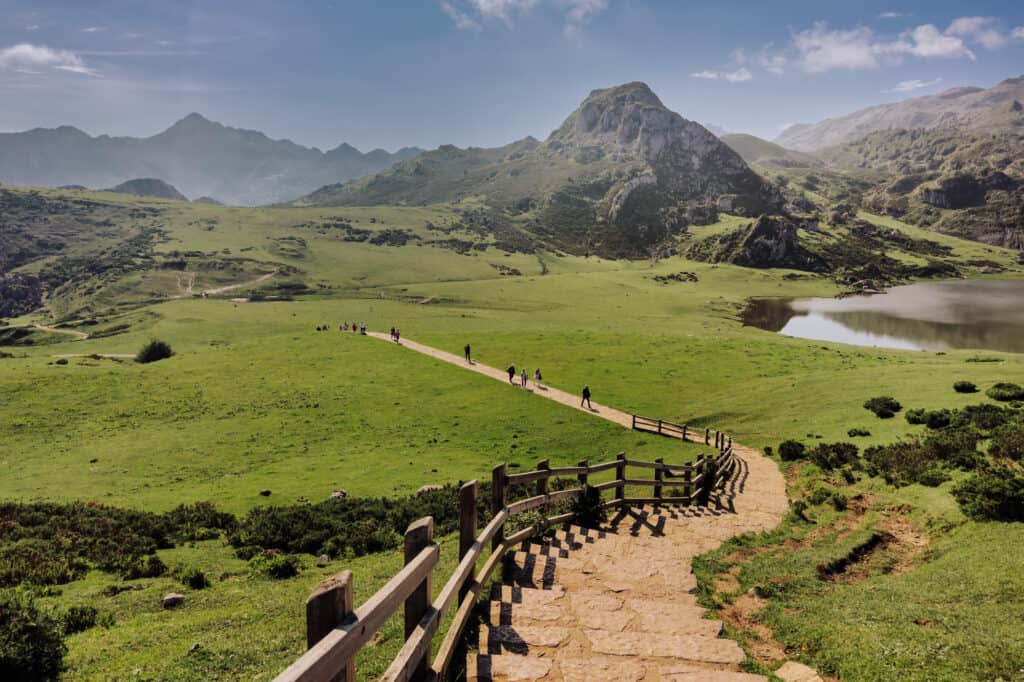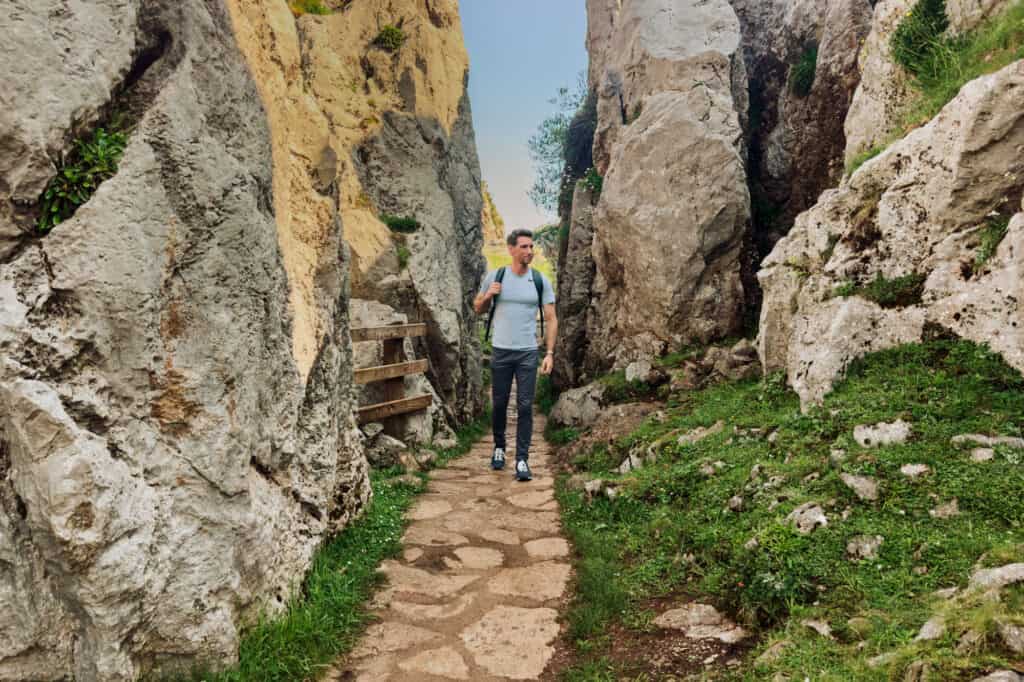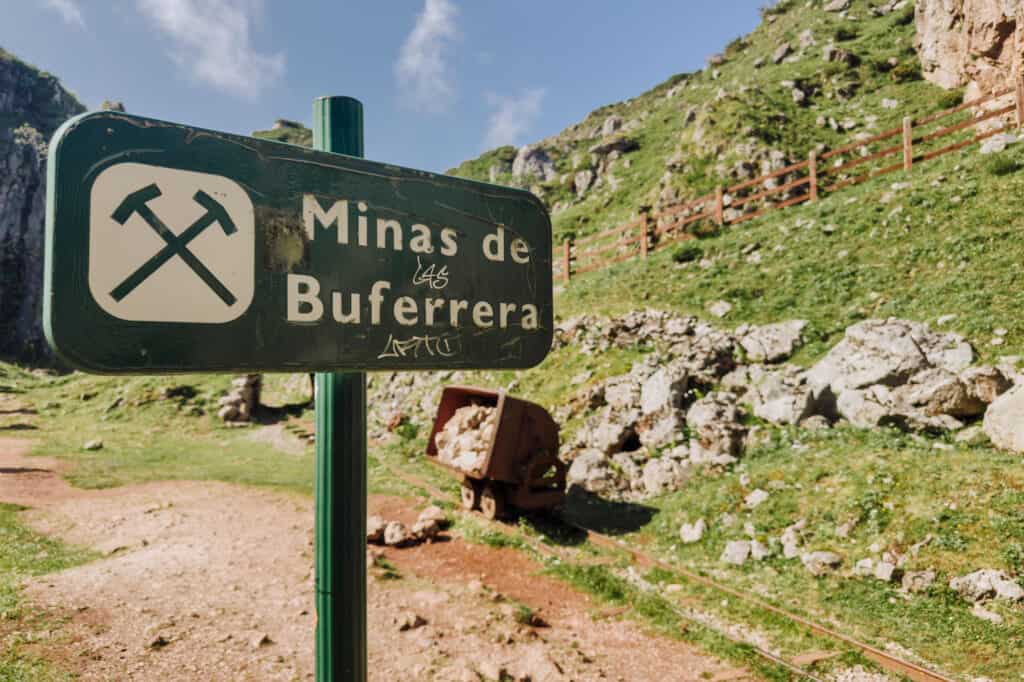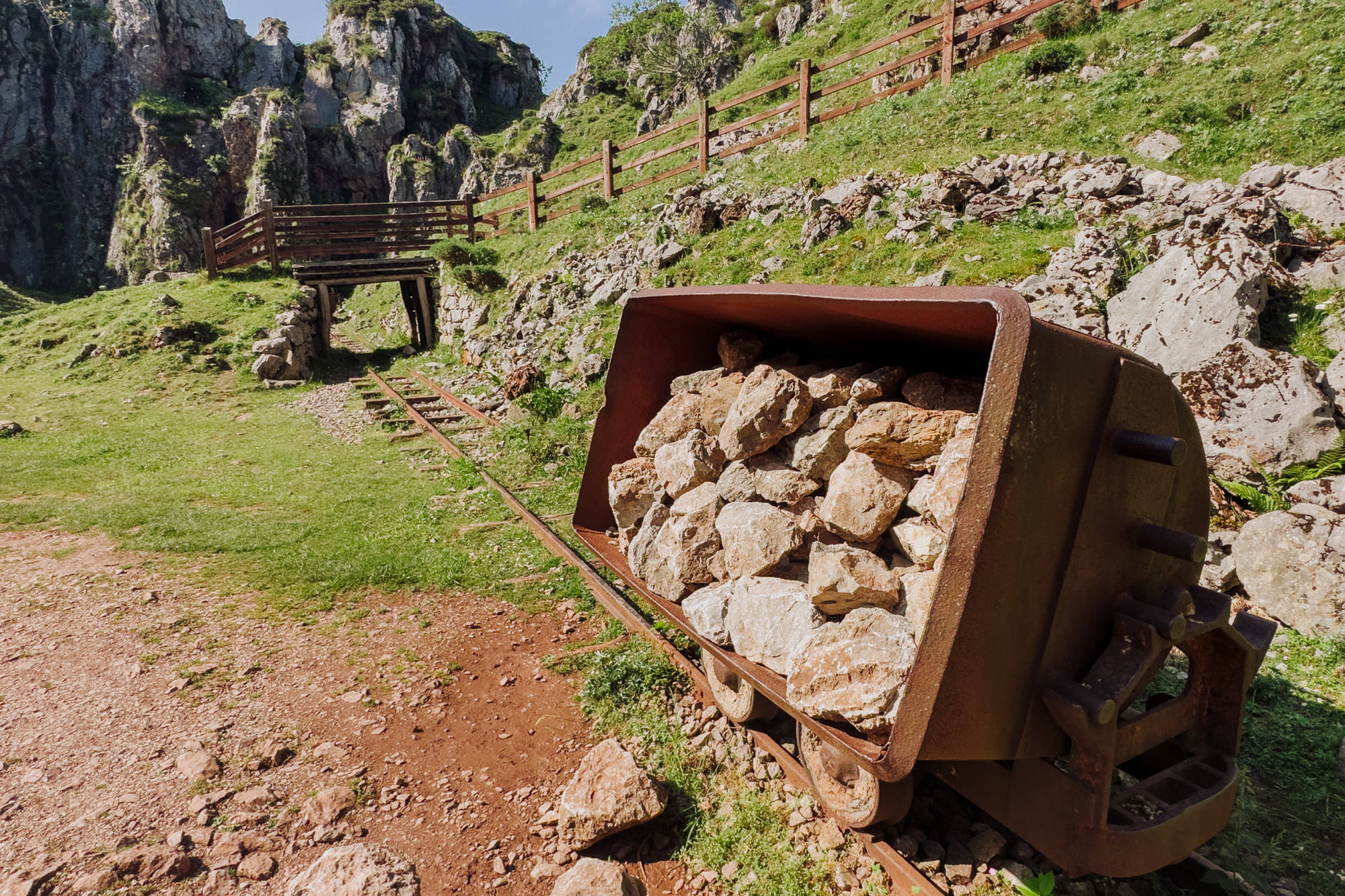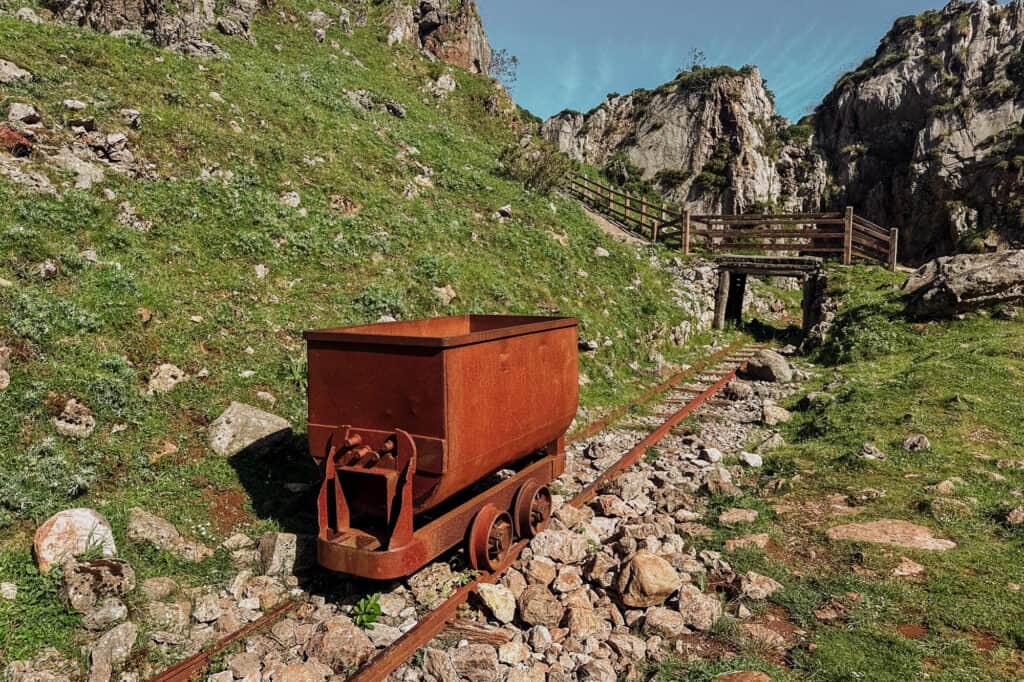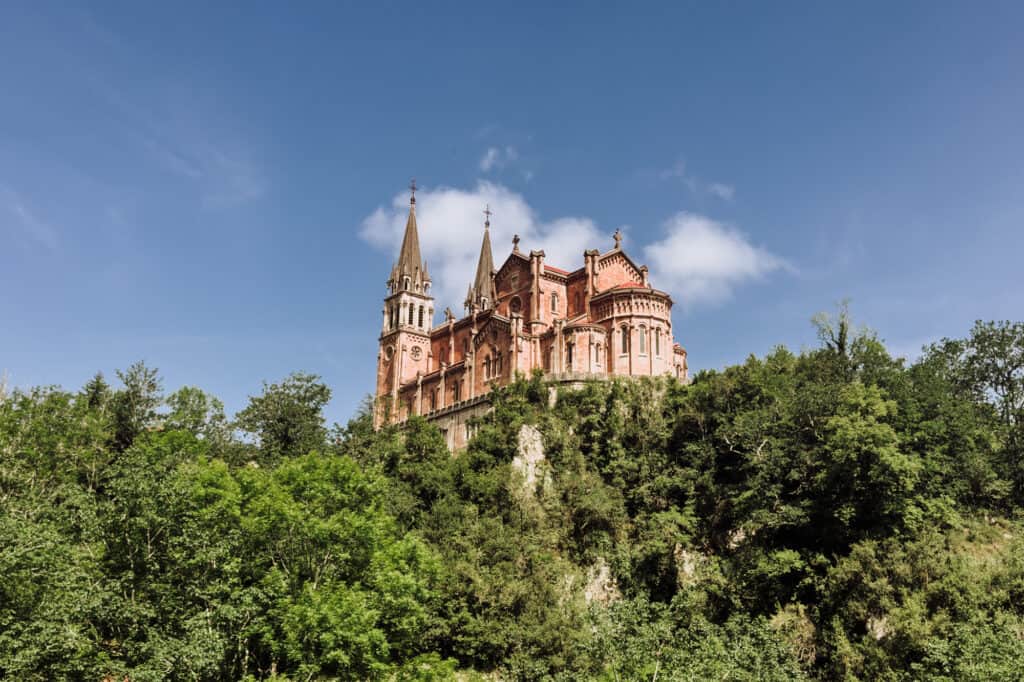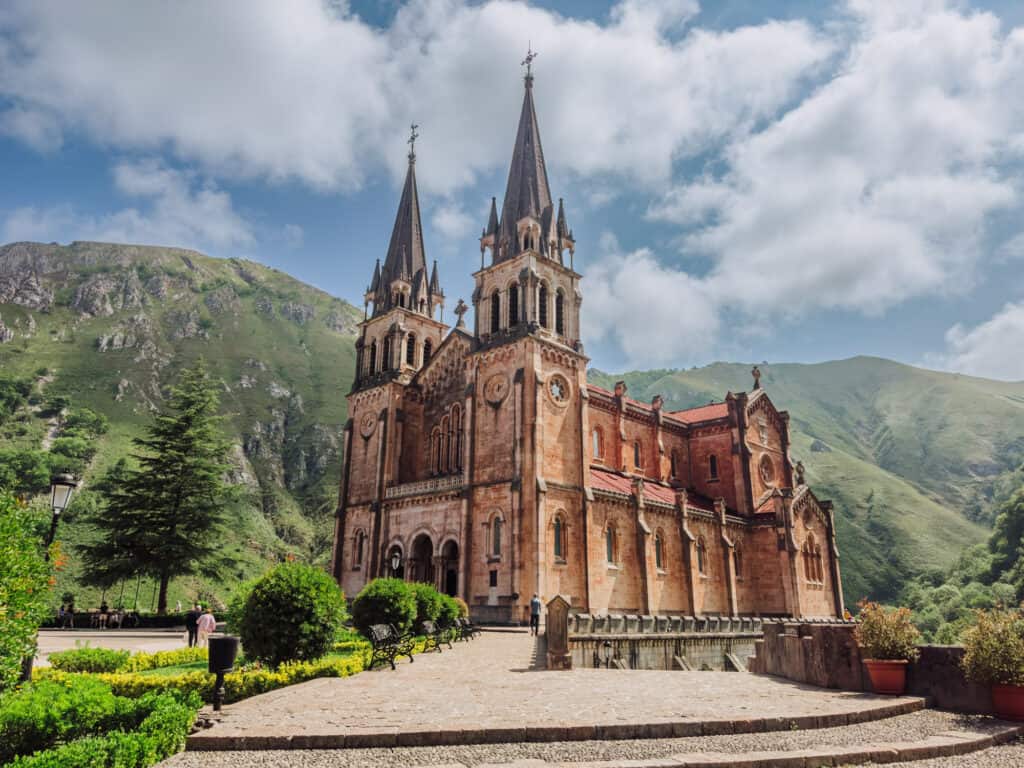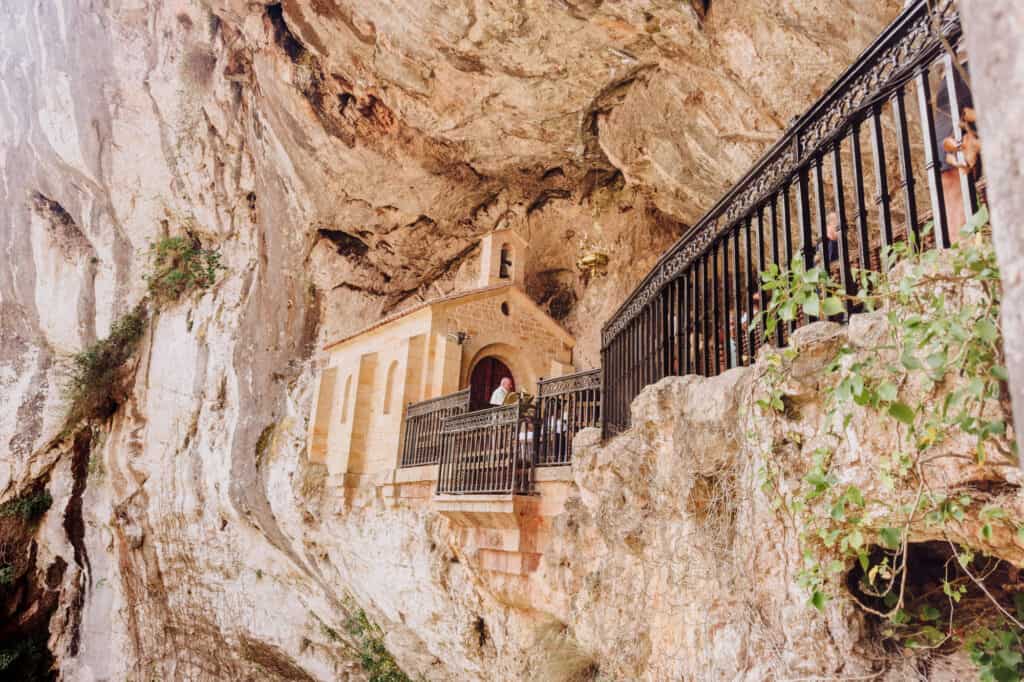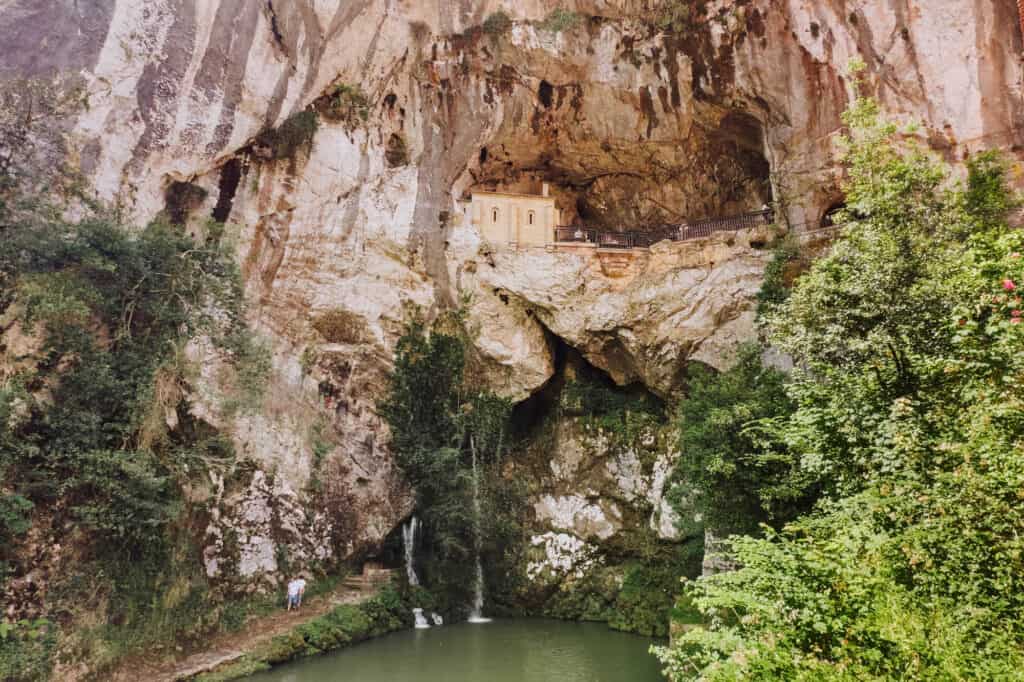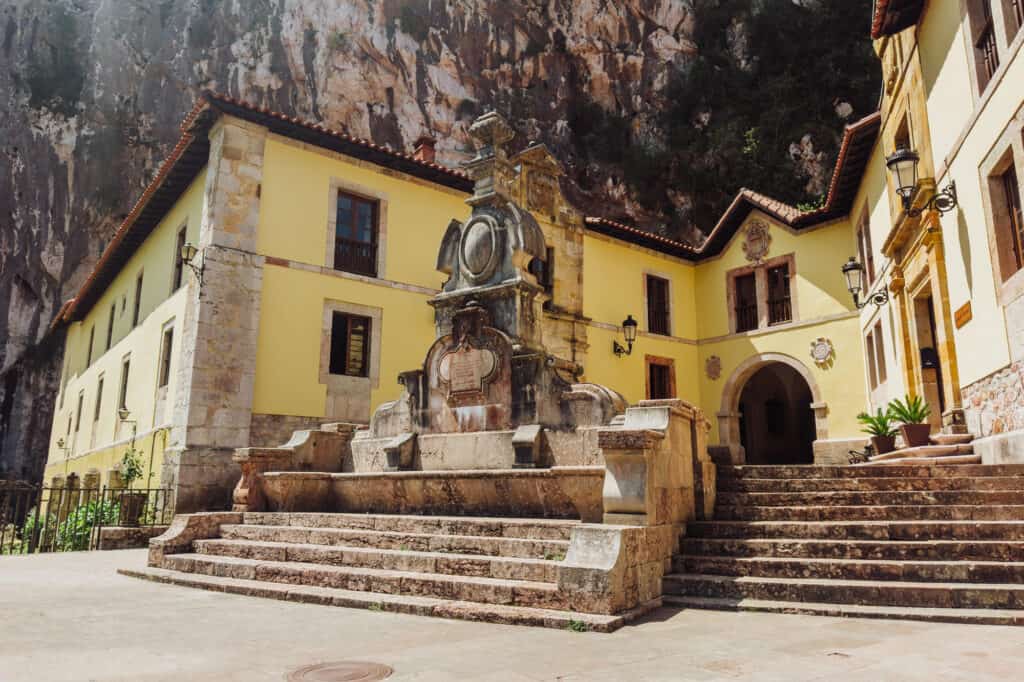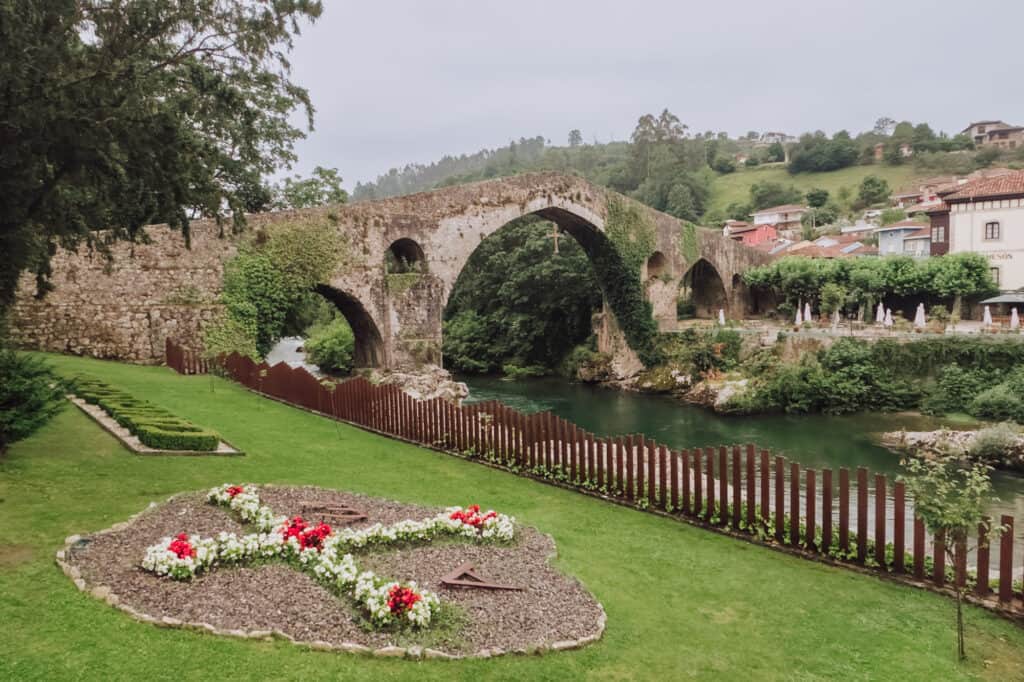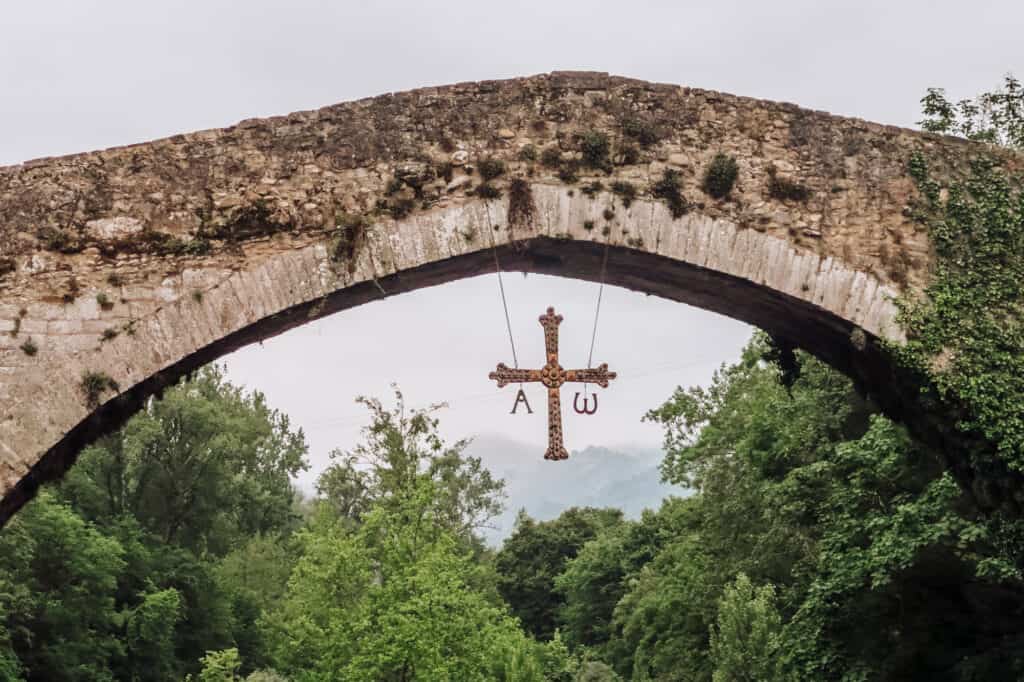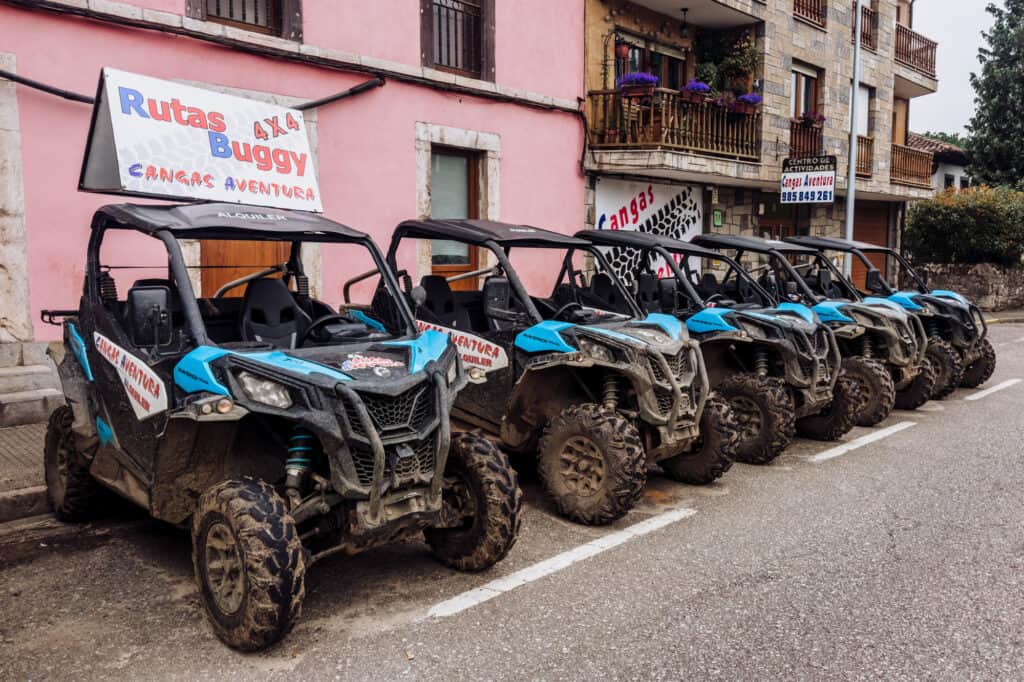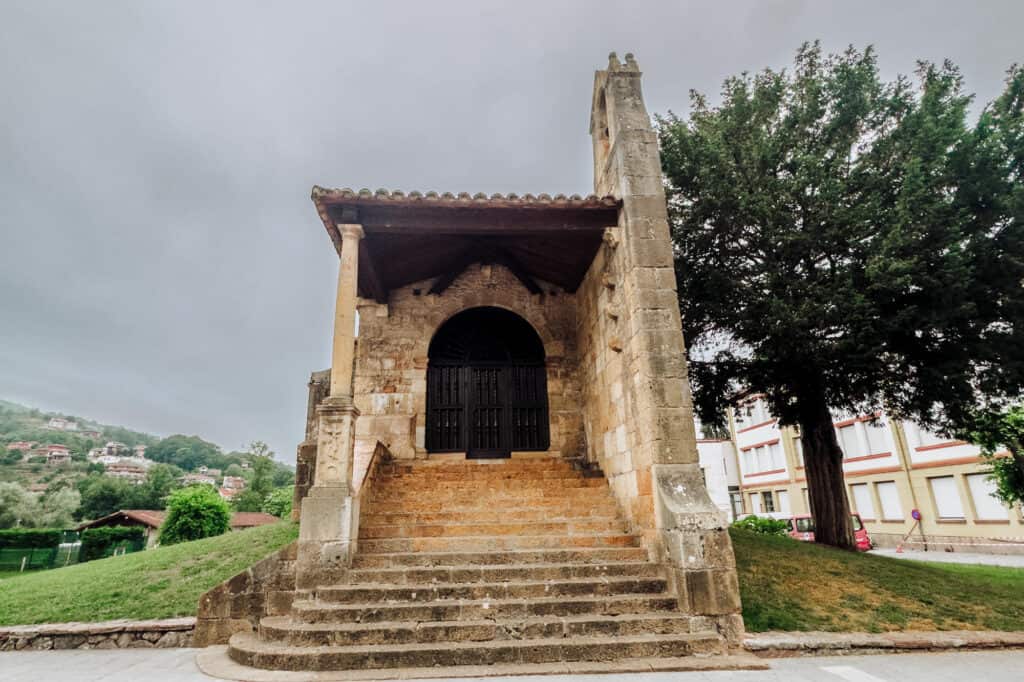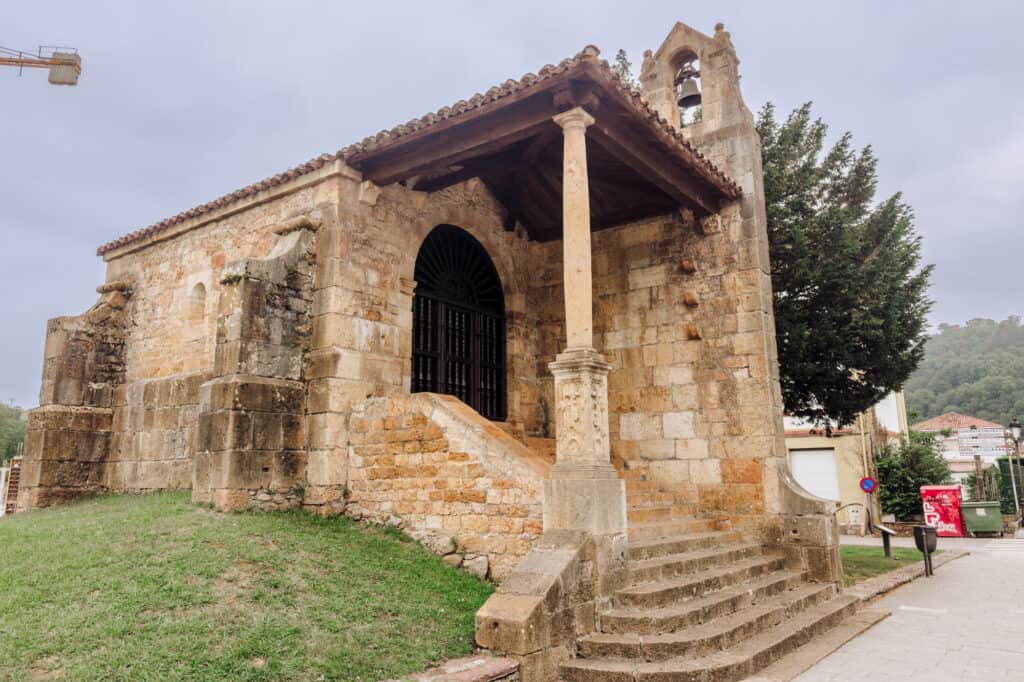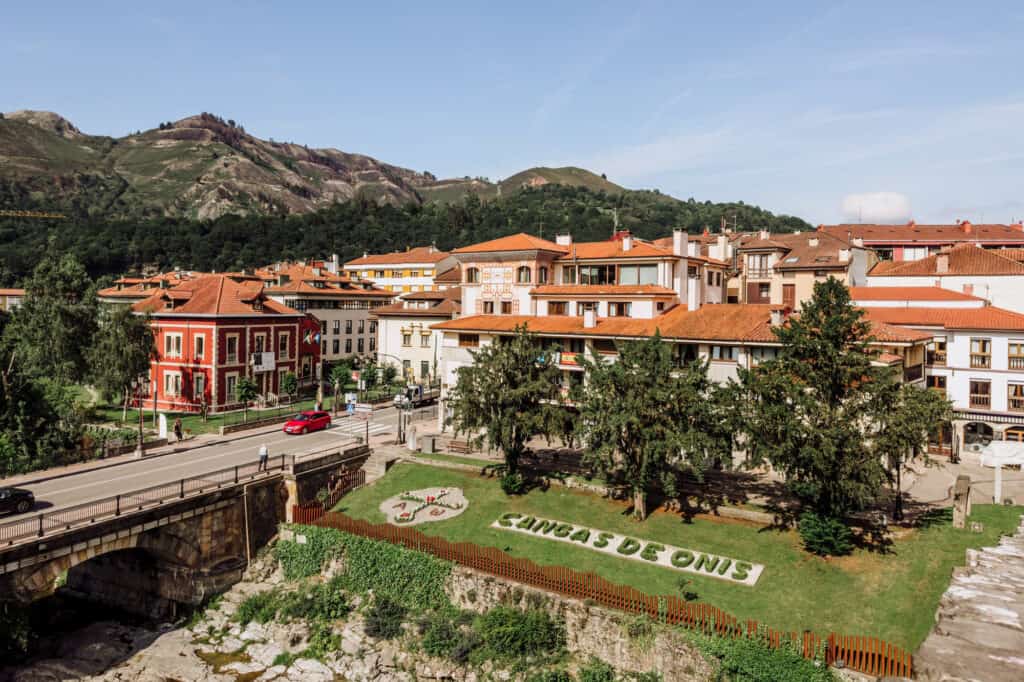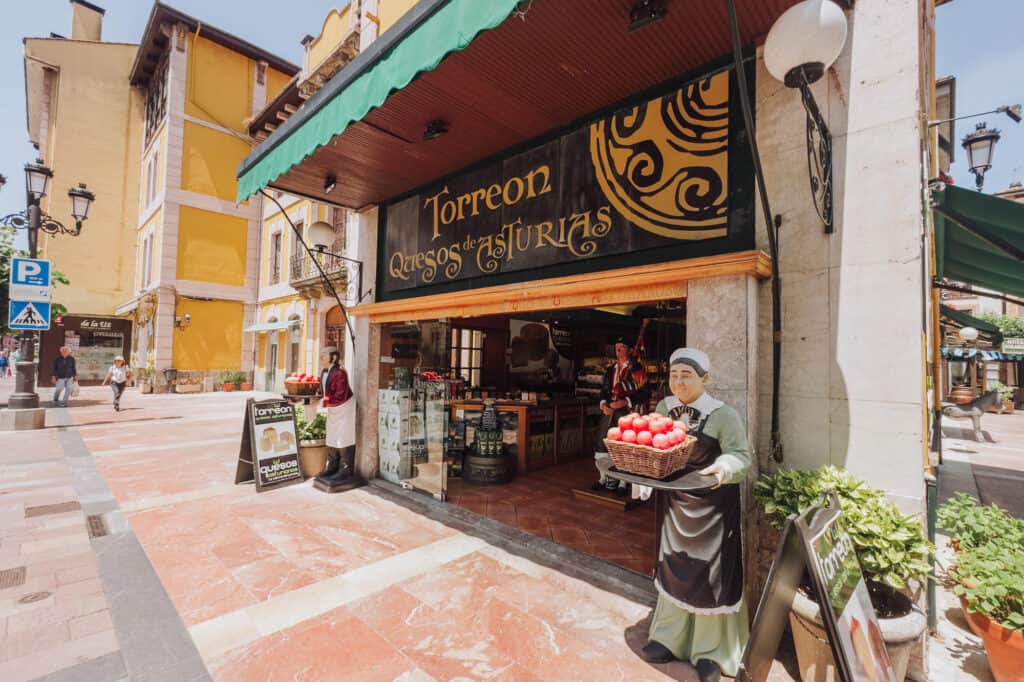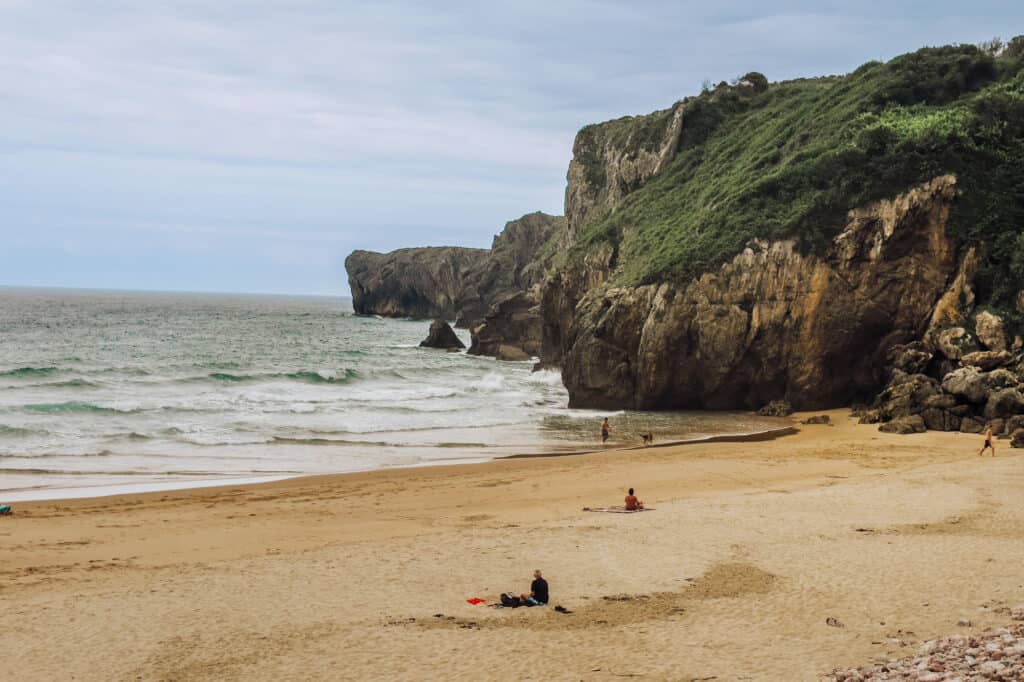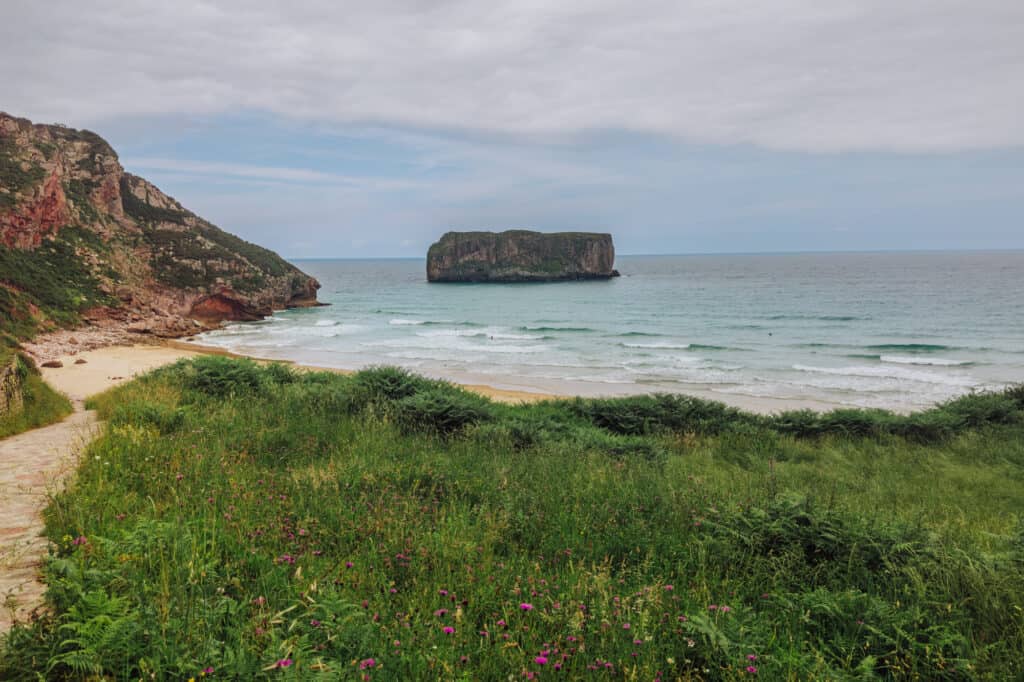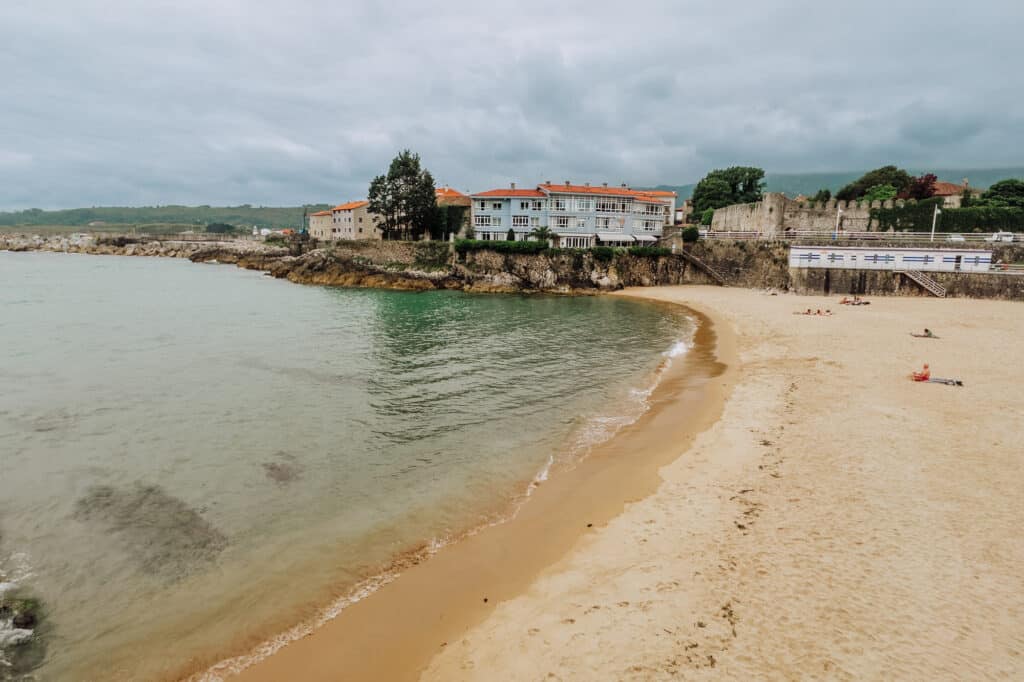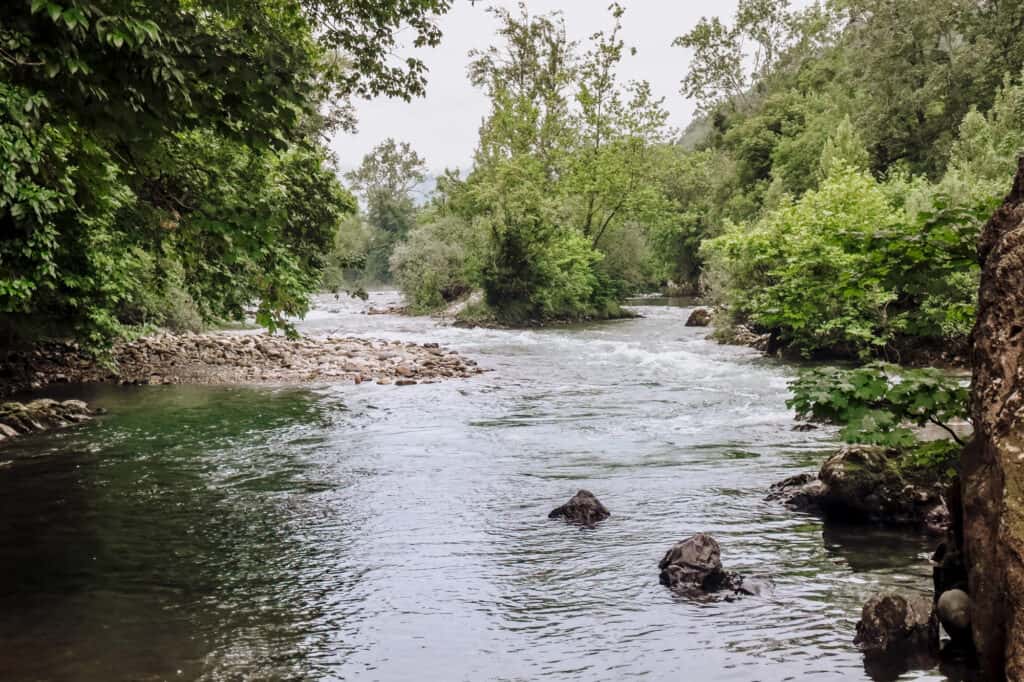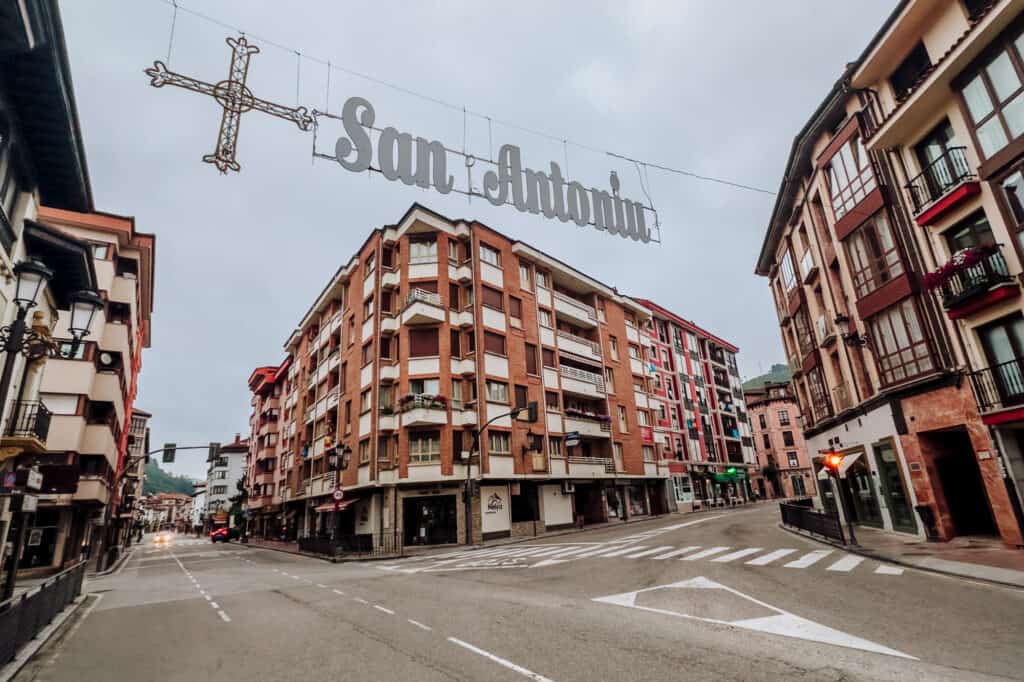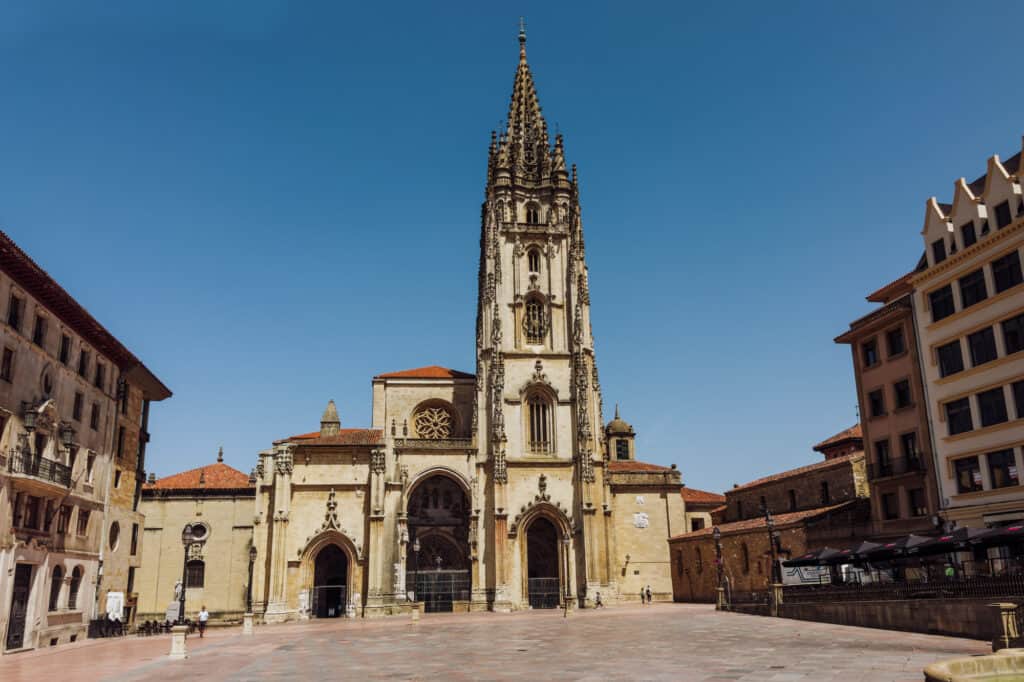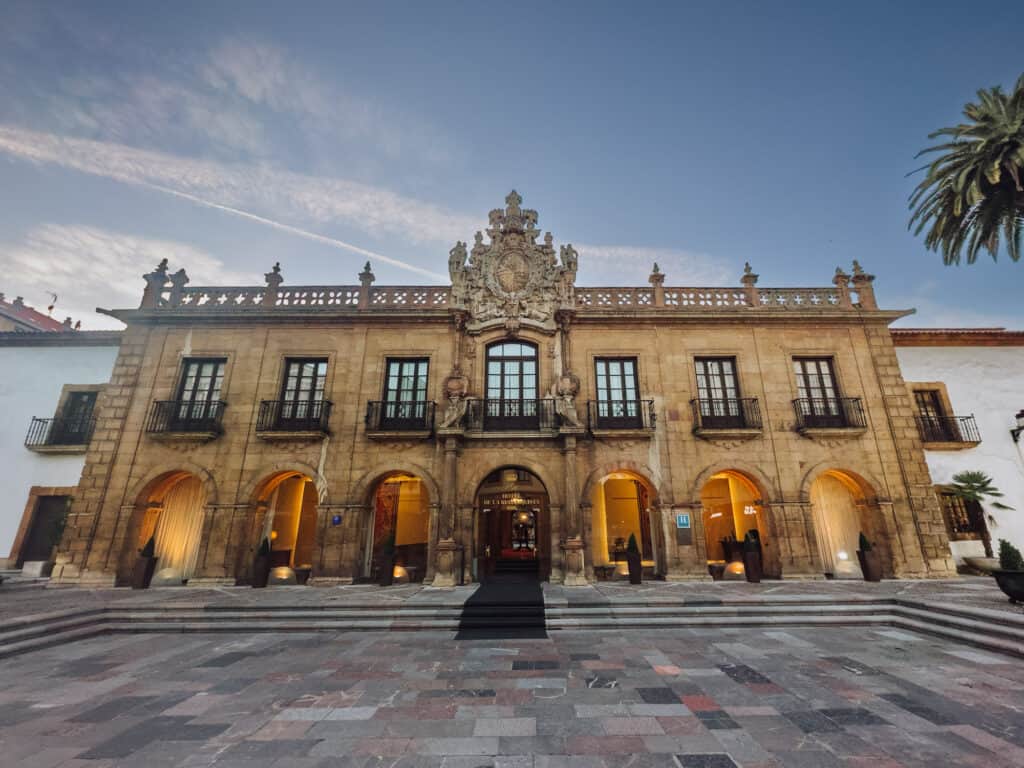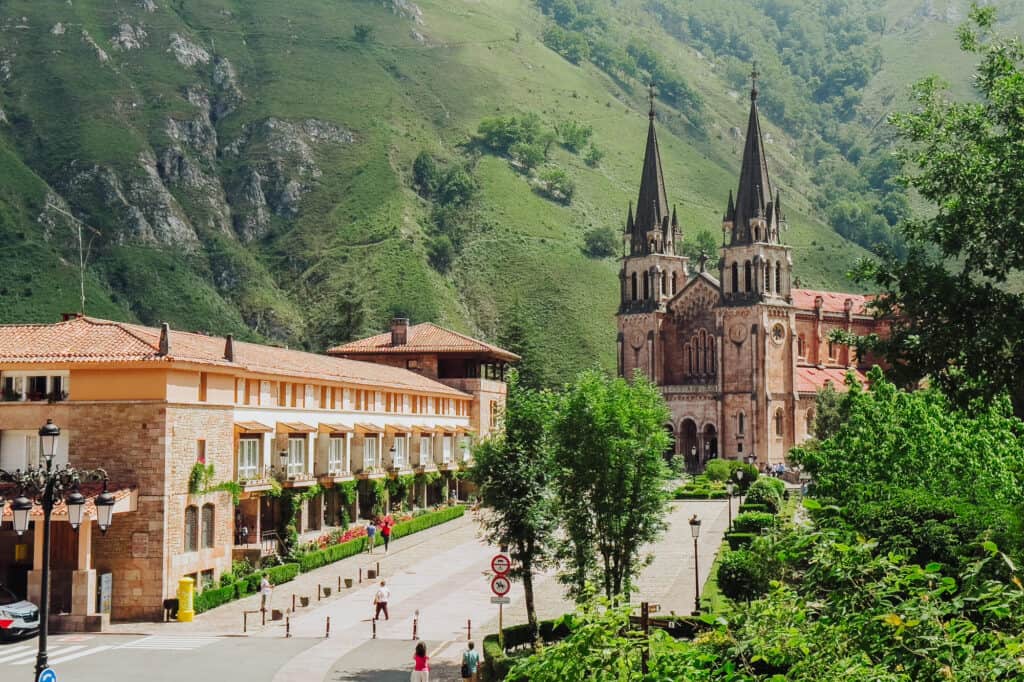Cangas de Onis: Gateway to the National Park in Asturias
CANGAS DE ONIS IN ASTURIAS: GATEWAY TO PICOS DE EUROPA
Cangas de Onís is a picturesque town located in the Asturias region of northern Spain. It is nestled in the foothills of the Picos de Europa National Park, offering stunning natural landscapes and a rich cultural heritage.
Cangas de Onís holds historical importance: it became the first capital of the Kingdom of Asturias in the 8th century.
Sidenote: While it’s officially spelled “Cangas de Onís” with an accent over the “i” in Spain, American keyboards don’t typically have that option easily available. So please excuse the slight grammatical inaccuracy through this post!
Tours of Cangas de Onis & Picos de Europa
If you’d rather have someone else do the planning, navigating, and driving, these are excellent tour options of Cangas de Onis and Picos de Europa, from other parts of Asturias and Bilbao:
➡️ PRIVATE TOUR from Oviedo or Gijon
➡️ TOUR: Santander to Picos de Europa
➡️ TOUR: Bilbao to Picos de Europa
Where to Stay: Hotels in Cangas de Onis
Cangas de Onis has many hotel options and rentals to choose from. You can use this interactive map to see what’s available for the dates of your visit.
Keep in mind: there’s not much parking in the town. If you’re driving a rental car, make sure your hotel has a parking option available.
The hotels in Cangas de Onis are mostly no-frills. You can use this interactive map to search around for dates and rates. I’d advise staying right in town.
How to Get to Cangas de Onis
You’ll need to rent a car for the best experience in Northern Spain. I use Discover Cars, since they include the big international rental brands, in addition to the locally-based companies in Spain.
➡️ Click to Book: Rental Cars in Spain
The Closest Airports to Cangas de Onis
You can fly into Oviedo’s small airport, and rent a car for the hour-long drive to Cangas de Onis.
Or, Bilbao’s airport is a bit farther away. It’s a very pretty 230-kilometer, 2.5-hour drive from Bilbao to Cangas de Onis.
Madrid to Cangas de Onis
Madrid is the airport with the most options for Americans. Several European airlines have quick, inexpensive flights from Madrid up to Oviedo.
If you choose to rent a car and drive, it’s a five-hour drive from Madrid to Cangas de Onis.
You can also take the ALSA bus line from Madrid to Cangas de Onis. Their website will have their up-to-date schedules.
There’s no direct train between the cities. You’ll have to take the train from Madrid to Oviedo or Arriondas, and then take a bus to Cangas de Onis.
Cangas de Onis: Gateway to Picos de Europa National Park
Picos de Europa National Park, or Parque Nacional de los Picos de Europa in Spanish, is a stunning natural reserve located in Northern Spain.
Picos is of the country’s most renowned national parks, known for its rugged peaks, deep valleys, dramatic cliffs, and diverse flora and fauna.
Bus / Shuttle from Cangas de Onis to Picos de Europa
During parts of the year, you cannot drive yourself into Picos de Europa from Cangas de Onis.
You’ll have to park at either the bus station in Cangas, or up in one of the lots at Covadonga, and take the shuttle in.
The gates up to the national park close by 7:30am. If you’d like to drive your own car, get there before 7:30!
PRO TIP: Don’t drive yourself! I’m the first to admit: I did *not* want to take the bus to the national park. In retrospect, it’s an excellent option, and the shuttle system is very-well organized!
I would suggest taking the shuttle bus from the bus station in Cangas de Onis all the way.
The cost is 9 Euros (roundtrip!), and it will stop at both Covadonga and the visitor center parking lot near the lakes in the park (Lagos de Covadonga).
The road itself through Picos de Europa National Park is essentially one-lane in parts, as it winds up through the mountains. It runs right along the cliffs, reminding me of Glacier National Park’s “Going to the Sun Road” in Montana.
While it’s not overly-crowded, the combination of the narrow road, plus the cows and goats blocking the way will have you happy to have someone else behind the wheel!
The shuttle bus will take 15 minutes to get from Cangas de Onis to Covadonga, and another 30 minutes to get to the hiking trails at the lakes.
A bus will hit each stop every 30 minutes. Some allow dogs and bikes.
The final bus from the lakes runs at 8:00pm / 20:00 each night back to Cangas de Onis.
Geography of Picos de Europa
The national park encompasses the Cantabrian Mountains, specifically the Picos de Europa mountain range. The park covers an area of around 647 square kilometers (250 square miles).
You’ll find towering peaks, deep gorges, lush valleys, and pristine lakes.
Peaks in Picos de Europa
The highest peak in the range is Torre Cerredo, standing at 2,648 meters (8,688 feet). Other prominent peaks include Naranjo de Bulnes (Picu Urriellu) and Peña Santa de Castilla.
The glacially-carved Cares Gorge (Garganta del Cares) is a famous natural feature in the park, offering stunning hiking trails along its cliffs.
The trails around the lakes (where the shuttle bus from Cangas de Onis drops passengers off) are easily defined, marked, and well-maintained.
Picos de Europa Hikes
Picos de Europa offers a wide variety of hiking options for people with different abilities and schedules. Here are a few hikes to consider:
- Ruta del Cares: This is one of the most famous and popular trails in the park. It follows the Cares Gorge, a deep canyon with towering cliffs and a river running through it. The trail is about 12 kilometers (7.5 miles) long and offers spectacular views. It is a relatively easy and well-marked route suitable for hikers of various levels of experience.
- Urriellu (Naranjo de Bulnes): This trail leads to the iconic peak of Naranjo de Bulnes, also known as Picu Urriellu. It is a challenging and demanding hike, suitable for experienced and physically fit hikers.
- Vega de Urriellu: This trail takes you to Vega de Urriellu, a picturesque meadow nestled in the heart of the park. The hike offers stunning panoramic views of the surrounding peaks and is a great option for those seeking a moderately challenging trek.
- Fuente Dé: The hike to Fuente Dé is a popular choice for visitors. It starts at the Fuente Dé cable car station, which takes you up to a viewpoint with panoramic views of the park.
- Lakes of Covadonga: This trail takes you to the enchanting Lakes of Covadonga, a group of glacial lakes nestled amidst the mountains. The route offers beautiful scenery, including lush forests, waterfalls, and the serene lakes themselves. It is a moderate hike suitable for hikers of different levels.
Plants & Animals in Picos de Europa
You’ll find alpine meadows and forests at the lower elevations inside Picos de Europa, along with hardy cold-weather shrubs up higher toward the peaks.
Picos de Europa is home to several endangered and protected species, including the Cantabrian brown bear, Iberian wolf, chamois, and the golden eagle.
Mining History in Picos de Europa
In the past, various minerals were extracted from Picos de Europa, including iron, zinc, lead, and copper. The mining industry in the area dates back to Roman times.
Today, as you hike near the Lakes of Covadonga, you’ll go through old mining areas, where you can read about the old operations and even walk through some of the mining tunnels.
Covadonga
Covadonga is a small village inside Picos de Europa National Park. The village offers a range of amenities and facilities for tourists. The big draw is the sanctuary perched on the cliff.
How to Get From Cangas de Onis to Covadonga
You can easily drive yourself from Cangas de Onis up to Covadonga. It’s only a 15-minute drive from town.
There are several parking lots along the way, and if you arrive in the morning (before 11:00am) you should be able to find a parking spot without a problem.
Alternatively, you can take the shuttle bus from the bus station in Cangas de Onis to Covadonga. They run every 30 minutes.
Covadonga Sanctuary
The most prominent building is the Basilica of Covadonga, which is a grand neo-Romanesque church on the cliff.
Constructed between 1877 and 1901, it was designed by the Spanish architect Roberto Frassinelli. The basilica is dedicated to the Virgin of Covadonga, also known as La Santina, who is considered the patroness of Asturias.
Masses are said here frequently.
Chapel in the Cave of Covadonga
The Chapel in the Cave of Covadonga, also known as the Holy Cave or Santa Cueva, is closely associated with the Reconquista, a period in medieval Spanish history when Christian forces sought to reclaim the Iberian Peninsula from Muslim rule.
According to legend, in the year 722, a small Christian army led by Don Pelayo took refuge in the mountainous terrain around Covadonga to escape the Moorish forces. Seeking divine assistance, Don Pelayo and his troops sought the protection of the Virgin Mary. It is said that during the battle, a hidden cave provided a sanctuary for the Christians, and with the Virgin’s intercession, they achieved an unlikely victory against the Moors.
In commemoration of this event, a small chapel was constructed inside the cave. The original chapel was built in the 8th century, but over the centuries, it has undergone several modifications and renovations. The present-day chapel, which dates back to the 19th century, is a simple structure with a facade made of pink limestone.
You’re likely to see a mass being held on your visit, which you can hear echoing through the area.
Covadonga Monastery
The Monastery of San Pedro de Villanueva is a medieval monastery dating back to the 12th century. It is an architectural gem, showcasing Romanesque and Gothic elements.
Things to Do in Cangas de Onis
The Roman Bridge is the most famous landmark in Cangas de Onis, but there’s much more to see and do on a visit!
The Roman Bridge
The Roman Bridge in Cangas de Onis, known as the “Puente Romano,” is an iconic symbol of the region and one of the most significant Roman structures in northern Spain.
The bridge spans the Sella River, and is believed to have been built by the Romans during the 1st or 2nd century AD. The bridge is constructed of large stone blocks and features semicircular arches, a common architectural style used by the Romans in.
The bridge measures around 60 meters in length and stands about 10 meters above the river. It’s open to pedestrians to cross.
The “Cruz de la Victoria” (Cross of Victory) hangs from the center. This cross is a replica of the original, which is housed in the nearby Santa Cruz Chapel. The Cruz de la Victoria is a Christian relic associated with the victory of King Pelayo over the Moors in the Battle of Covadonga in 722 AD. It holds great religious and historical significance for the region.
Over the centuries, the Roman Bridge has undergone several restorations and repairs to maintain its structural integrity. It has survived various floods and natural disasters. Today, it stands as a remarkable testament to Roman engineering and serves as a popular tourist attraction, offering beautiful views of the surrounding landscape.
Off-Trail Adventures
There are horseback rides you can take through the river, and ATV/off-road adventures you can book, too in Cangas de Onis.
Cangas Aventura is widely considered to be the best to book from in the adventure department!
Santa Cruz
Santa Cruz, or the Holy Cross, is a chapel which dates back to the 16th century, although some historical accounts suggest that an earlier chapel existed on the same site.
The “Cruz de la Victoria” (Cross of Victory) is inside the chapel. It’s a cross made of gold and gems, and is an important Christian relic. The cross represents the victory of King Pelayo and the Battle of Covadonga in 722 AD, and the triumph of Christianity over the Moorish invaders.
The original Cruz de la Victoria is considered a symbol of the Asturian monarchy and is now kept in the Museum of Covadonga. However, a replica of the cross is permanently displayed inside the Santa Cruz Chapel for visitors and pilgrims to see.
Festivals in Cangas de Onis
Cangas de Onis celebrates several festivals through the year, including;
- Fiesta del Pastor (Shepherd’s Festival): This festival takes place in July and pays tribute to the region’s agricultural and livestock heritage. The festivities include traditional music, dance performances, a livestock fair, and exhibitions showcasing local crafts and products. The highlight of the festival is the Desfile de Carrozas (Float Parade), featuring elaborately decorated floats representing different aspects of rural life.
- Fiesta de Nuestra Señora de Covadonga: Held on September 8th, this festival honors the patron saint of Asturias, Our Lady of Covadonga. The celebrations include religious processions, traditional music performances, and cultural activities. The festival attracts both locals and visitors, and it is an important event in the region’s religious calendar.
- Fiesta de San Antonio: Celebrated on June 13th, the Fiesta de San Antonio is dedicated to Saint Anthony, the patron saint of animals. It is a day when locals bring their pets and livestock to the church to be blessed by the priest.
- Semana Santa (Holy Week): Like many other Spanish towns, Cangas de Onís observes the Semana Santa with processions and religious events during the week leading up to Easter. The processions feature elaborately decorated floats and religious statues.
The Food in Cangas de Onis
Cangas de Onís is known for its Asturian cuisine. The town offers a wide array of restaurants featuring traditional dishes, including hearty stews, seafood, and locally produced cheeses, such as the famous Cabrales cheese.
Visitors can explore the local restaurants and sidrerías (cider houses) to sample the flavors of the region. The waiters are famous for pouring the cider over their backs into glasses, and they’re supposed to do it without looking!
Beaches Near Cangas de Onis
The northern coast of Spain is dotted with beautiful sandy beaches. The coves are often surrounded by rocky cliffs.
For a beach-town experience, I’d recommend Llanes. For a secluded rural beach without the crowd, I’d recommend Andrin.
Andrin Beach in Asturias
Andrin is 50 kilometers from Cangas de Onis. You’ll find a long stretch of golden sand, clear turquoise waters, and picturesque cliffs that provide a stunning backdrop. You’ll follow a single-lane road through some farm fields to a dirt parking lot.
Andrin Beach has been awarded the Blue Flag designation, which is an international recognition for beaches that meet stringent criteria regarding water quality, environmental management, safety, and services. This makes it an ideal spot for swimming and surfing. The waves are usually moderate, so it’s not overly dangerous for families.
Playa del Sablon in Llanes
Llanes is one of the best beach towns in Asturias. It’s about 50 km from Cangas de Onis.
Playa del Sablon is a popular beach with both locals and tourists in Llanes. It features fine golden sand, clear waters, and is protected by cliffs on both sides. It offers a range of facilities, including showers, restrooms, and nearby cafes and restaurants.
Other Beaches Near Cangas de Onis
- Playa de Vega: Located about 27 kilometers north of Cangas de Onís, Playa de Vega is a stunning sandy beach situated near the town of Ribadesella. It’s known for its natural beauty and is popular among surfers.
- Playa de la Espasa: About 34 kilometers north of Cangas de Onís, Playa de la Espasa is another picturesque beach near Ribadesella. It offers a long stretch of golden sand and is ideal for relaxing walks and sunbathing.
- Playa de Rodiles: Located around 40 kilometers northwest of Cangas de Onís, Playa de Rodiles is a large sandy beach near the town of Villaviciosa. It is a protected natural area and offers beautiful views of the estuary and surrounding countryside.
- Playa de San Antolín: Situated about 43 kilometers west of Cangas de Onís, Playa de San Antolín is a scenic beach near the town of Llanes. It is known for its golden sand, cliffs, and stunning views.
Other Info on Cangas de Onis
History of Cangas de Onis
Archaeological findings suggest humans were first in the area in the Paleolithic era, and the Astures, a Celtic people, prior to the Roman conquest.
The Romans established a settlement, and Cangas de Onis became a strategic connection between different parts of the Iberian Peninsula.
In the early 8th century, Cangas de Onis became the capital of the Kingdom of Asturias, until it was moved to Oviedo in the 9th century.
The town faced Viking invasions, conflicts with neighboring territories, and the effects of the Reconquista (reconquest) period.
The Sella River
The Sella River, known as the Río Sella in Spanish, flows through Asturias, originating in the Picos de Europa mountain range. It flows 66 kilometers (41 miles) into the Cantabrian Sea near the town of Ribadesella.
The Sella River gained fame as the host of the International Descent of the Sella (Descenso Internacional del Sella) canoe race. The first Saturday in August, thousands show up to race 20 kilometers from Arriondas to Ribadesella.
In general, the Sella River is known for its crystal-clear waters, fishing, kayaking, and rafting. A variety of outfitters offer adventures along the river!
Significance of San Antonio
San Antonio, also known as Saint Anthony of Padua, holds religious and cultural significance in Cangas de Onis. The Feast of San Antonio takes place on June 13th, and includes the “Roxada,” a religious procession where a statue of San Antonio is carried through the streets of the town.
During the Feast of San Antonio, it is customary for locals to bring their pets, particularly farm animals, to be blessed by the statue of the saint. This tradition is rooted in the belief that San Antonio is the patron saint of animals. Farmers bring their cows, horses, and sheep to the procession, where they are blessed by the priest, to ensure the well-being and prosperity of the animals.
The Weather in Cangas de Onis
In general, Asturias experiences a temperate coastal climate, with mild summers, cool winters, and rainfall throughout the year.
Here’s a breakdown of the weather in the different seasons:
- Spring (March to May): Spring in Cangas de Onís is characterized by cool temperatures, with average highs ranging from 14°C to 19°C (57°F to 66°F). Nights can still be chilly, with lows averaging between 7°C and 10°C (45°F to 50°F). Rainfall is common in the spring.
- Summer (June to August): Summers in Cangas de Onís are generally mild and pleasant. Average temperatures during this season range from 18°C to 24°C (64°F to 75°F). It can occasionally reach higher temperatures, but it is usually tempered by the sea breeze. Summer is the driest season in terms of rainfall, although you’ll still see showers and rainstorms.
- Autumn (September to November): Autumn brings cooler temperatures to Cangas de Onís. Average highs range from 15°C to 20°C (59°F to 68°F), while nighttime temperatures drop to around 8°C to 12°C (46°F to 54°F). Rainfall increases during this season, and misty mornings are common.
- Winter (December to February): Winters in Cangas de Onís are relatively mild but cool. Average daytime temperatures range from 11°C to 15°C (52°F to 59°F), while nighttime temperatures can drop to around 5°C to 8°C (41°F to 46°F). Snowfall is infrequent, particularly at lower altitudes, but the nearby mountains can experience snow during this season. Rainfall is relatively high, and cloudy or overcast days are common.
Cangas de Onís FAQs
What’s the best time to visit Cangas de Onís?
Summer into fall are the best months to visit this area. The summers are mild, but cool (unlike much of the rest of scorching Spain!).
What region of Spain is Cangas de Onís in?
Asturias is an autonomous community in the northwestern part of Spain, on the northern coast of the Iberian Peninsula. It shares borders with Galicia to the west, Cantabria to the east, and Castile and León to the south. Asturias is known for its stunning natural landscapes, rich cultural heritage, and distinct regional identity.
What else is Asturias known for?
Asturias is known for its food, history, and natural beauty.
The capital city of Asturias is Oviedo, which is known for its medieval old town, impressive Gothic cathedral, and numerous pre-Romanesque churches and other buildings.
Gijón, the largest city in Asturias, is a vibrant coastal city with a thriving cultural scene, beautiful beaches, and a lively waterfront.
What food is Cangas de Onís known for?
Some of the most famous dishes and food products associated with Asturias include:
- Fabada Asturiana: Considered the region’s signature dish, fabada is a hearty bean stew made with large white beans known as fabes, cured meats such as chorizo, morcilla (blood sausage), and pork. It is slow-cooked to perfection, resulting in a flavorful and satisfying dish.
- Sidra (Cider): Asturias is known for its traditional cider production. Sidra Asturiana is a natural, slightly sparkling cider made from locally grown apples. The pouring technique, known as escanciar, where the cider is poured from a height into a glass, is an important part of the cider-drinking experience in Asturias.
- Queso de Cabrales: Cabrales cheese is a famous blue cheese produced in Asturias. Made from cow’s milk and aged in limestone caves, it has a strong and distinctive flavor. Queso de Cabrales is often enjoyed on its own or incorporated into various dishes.
- Pastel de Cabracho: This is a savory fish cake made with cabracho, a local fish similar to scorpionfish. It is typically mixed with breadcrumbs, eggs, and various seasonings, then baked to create a flavorful and textured dish.
- Pote Asturiano: Similar to fabada, pote asturiano is another traditional Asturian stew. It features a combination of vegetables such as cabbage, potatoes, beans, and different types of pork, resulting in a comforting and filling dish.
- Marañuelas: These traditional Asturian cookies are made from a simple dough of flour, sugar, eggs, and butter. They are often enjoyed with a cup of coffee or as a sweet treat throughout the day.
- Casadielles: Casadielles are delicious pastries filled with a mixture of walnuts, sugar, and anise liquor. They are typically fried and sprinkled with sugar, making them a popular dessert during festive occasions in Asturias.
- Chorizo a la Sidra: Chorizo sausage is cooked in cider, resulting in a flavorful dish with a balance of smokiness and sweetness. It is often served as a tapa, accompanied by crusty bread.
Wrap: Is Cangas de Onís Worth a Visit?
I wish we had much more time in this beautiful part of Northern Spain! Especially if you’re into outdoor activities, you could spend several days here hiking and exploring the natural beauty!
